News List
January 18, 2021 SusNWaTr group has received a new grant funding from the Qatar National Research Fund, a member of Qatar Foundation. The project is titled: "Plasma-enhanced nano-catalytic polyamide membrane systems that minimize fouling and concentration polarization". Dr. Saleh is the PI of this project.

SusNWaTr group has received a new grant funding from the Qatar National Research Fund, a member of Qatar Foundation. The project is titled: "Plasma-enhanced nano-catalytic polyamide membrane systems that minimize fouling and concentration polarization". Dr. Saleh is the PI of this project. The project will develop nano-enabled anti fouling desalination members. Dr. Saleh is partnering with Dr. Manish Kumar at UT and Dr Anton Popelka and Dr. Igor Kurpa of Qatar University
December 16, 2020 Dr. Saleh has co-authored a journal article in Journal of Fish Diseases, titled: “Nano-scale Applications in Aquaculture: Opportunities for improved production and disease control”.
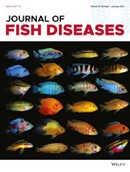
Dr. Saleh has co-authored a journal article in Journal of Fish Diseases, titled: “Nano-scale Applications in Aquaculture: Opportunities for improved production and disease control”. In this review, several nano-enabled technology successes are discussed as these relate to disease management in the aquaculture sector, with a particular focus on fishes.
Read More : Aquaculture is the fastest growing food-production sector and is vital to food security, habitat restoration, and endangered species conservation. One of the continued challenges to the industry is our ability to manage aquatic disease agents that can rapidly decimate operations and are a constant threat to sustainability. Such threats also evolve as microbes acquire resistance and/or new pathogens emerge. The advent of nanotechnology has transformed our approach to aquatic disease management with advances in water disinfection, food conversion and fish health, and management systems. In this review, several nano-enabled technology successes will be discussed as these relate to disease management in the aquaculture sector, with a particular focus on fishes. Future perspectives on how nanotechnology can offer functional approaches for improving disinfection and innovating at the practical space of early warning systems will be discussed. Finally, the importance of ‘safety by design’ approaches to the development of novel commercial nano-enabled products will be emphasized.
November 17, 2020 Saleh group has published a journal article in Environmental Science & Technology (EST), titled: “A structural equation model to decipher relationships among water, sanitation, and health in colonias-type unincorporated communities”. Recent graduate of Saleh Group, Lewis Stetson Rowles III

Saleh group has published a journal article in Environmental Science & Technology (EST), titled: “A structural equation model to decipher relationships among water, sanitation, and health in colonias-type unincorporated communities”. Recent graduate of Saleh Group, Lewis Stetson Rowles III is the lead author in this paper. This paper utilizes structural equation modeling to identify relationships among surveyed and measured variables for water issues and reveals the societal drivers for water use and perception on water of colonias residents in three Texas counties (i.e., El Paso, Starr, and Nueces).
Read More : The colonias along the United States-Mexico border are generally self-built neighborhoods of low-income families that lack basic infrastructure. While some government assistance has provided roads and electricity, water and wastewater services are still lacking in many colonias. This research is the first to collect a comprehensive dataset on water, sanitation, health, and living conditions in these unincorporated neighborhoods through collection of water samples and surveys; in all, 114 households in 23 colonias across three geographically diverse Texas counties are studied. Water quality is assessed via traditional microbial indicators, chlorine, and arsenic. This complex data set requires an advanced statistical tool to disentangle relationships among diverse factors. Structural equation modeling is utilized to identify relationships among surveyed and measured variables. The model reveals that colonias residents with well/hauled water accurately predict their water quality while those with treated+piped water tend to think that their water is worse than it actually is. Dwelling quality and availability of sanitary sewers influence perceived health risks and household health, respectively. Furthermore, these communities have an overwhelming need and desire for point-of-use water treatment. This model can inform decision making and may be adopted to probe other questions and social dynamics for water and sanitation in unincorporated communities elsewhere.
November 15, 2020 Environmental Science & Technology (EST), has featured in its cover, a recent publication titled: “Role of electrostatics in the heterogeneous interaction of two-dimensional engineered MoS2 nanosheets and natural clay colloids: Influence of pH and Natural Organic Matter”
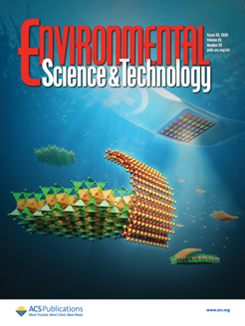
Environmental Science & Technology (EST), has featured in its cover, a recent publication titled: “Role of electrostatics in the heterogeneous interaction of two-dimensional engineered MoS2 nanosheets and natural clay colloids: Influence of pH and Natural Organic Matter” authored by the Saleh group. Senior Ph.D. student Indu V. Sabaraya is the lead author in this paper. This paper probes the geometry question of two-dimensional nanomaterials (i.e., MoS2) and how that influences their interaction with natural geocolloids, like clay.
Read more:
Journal
October 23, 2020 Saleh group has published a journal article in Environmental Science & Technology (EST), titled: “Role of electrostatics in the heterogeneous interaction of two-dimensional engineered MoS2 nanosheets and natural clay colloids: Influence of pH and Natural Organic Matter”.

Saleh group has published a journal article in Environmental Science & Technology (EST), titled: “Role of electrostatics in the heterogeneous interaction of two-dimensional engineered MoS2 nanosheets and natural clay colloids: Influence of pH and Natural Organic Matter”. Senior Ph.D. student Indu V. Sabaraya is the lead author in this paper. This paper probes the geometry question of two-dimensional nanomaterials (i.e., MoS2) and how that influences their interaction with natural geocolloids, like clay.
Read More: Few-layered molybdenum disulfide (MoS2) nanosheets are poised to be at the core of low-voltage electronic device development. Upon environmental release, these two-dimensional (2D) structures can interact with abundant natural geo-colloids. This study probes the role of dimensionality in modulating the aggregation behavior of 2D MoS2 nanosheets with plate-like geo-colloids (i.e., homoionized kaolinite and montmorillonite clays). MoS2 nanosheets were exfoliated using an ethanol-water mixture and aggregation kinetics were investigated with time-resolved dynamic light scattering (TRDLS) at low monovalent salt concentrations and at three pH levels, in the presence and absence of Suwannee River humic acid (SRHA). Results indicate that pH and particle ratios are key in modulating the stability of MoS2-clay systems. At pH 4, aggregation of MoS2 increased with increasing MoS2:clay ratios and approach a maximum of 0.09 nm/s and 0.06 nm/s in the binary systems with montmorillonite and kaolinite, respectively. Electrostatic attraction facilitates heteroaggregation at pH 4 and 6; differences in the clay structures (i.e., face-face or face-edge aggregates) might explain the resulting MoS2-clay aggregate configurations, which were probed via the evolution of particle size distribution (PSD). The presence of only 0.1 mg/L SRHA drastically suppresses the heteroaggregation propensity of MoS2 nanosheets with geo-colloids (to less than 0.01 nm/s at all pH values tested). The high stability of these heterogeneous systems under environmentally relevant conditions can increase the likelihood for cellular uptake and long-distance transport of MoS2.
October 20, 2020 Saleh group has published a journal article in RSC Advances, titled: “Photocatalytic activity of micron-scale brass on emerging pollutant degradation in water: Mechanism elucidation and removal efficacy assessment”.
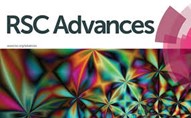
Saleh group has published a journal article in RSC Advances, titled: “Photocatalytic activity of micron-scale brass on emerging pollutant degradation in water: Mechanism elucidation and removal efficacy assessment”. Postdoctoral scholar Irwing M. Ramirez-Sanchez in the Saleh Group is the lead author in this paper. This paper evaluates the oxidative catalytic ability of micron-scale brass to degrade emerging contaminants.
Read MoreAlloys or smelted metal mixtures have served as cornerstones of human civilization. The advent of smelted copper and tin, i.e., bronze, in the 4th millennium B.C. in Mesopotamia pioneered the preparation of other metal composites, such as brass (i.e., mixture of copper and zinc), since the bronze age. The contemporary use of these alloys has expanded beyond extracting their physical strength. The catalytic chemistry of micron-scale brass or copper-zinc alloy can be utilized to effectively degrade emerging contaminants (ECs) in water, which are presenting significant risks to human health and wildlife. Here, we examine photocatalytic activity of a commercially available micro-copper-zinc alloy (KDF© 55, MicroCuZn), made with earth abundant metals, for oxidative removal of two ECs. The micron-scale brass is independently characterized for its morphology, which confirms that it has the β-brass phase and that its plasmonic response is around 475 nm. Estriol (E3), a well-known EC, is removed from water with ultraviolet (UV) radiation that catalyzed MicroCuZn and H2O2-MicroCuZn combinations. The synergy between H2O2, UV, and MicroCuZn enhances hydroxyl radical (•OH) generation and exhibit a strong pseudo-first-order kinetic degradation of E3 with a decay constant of 1.853 •10-3 min-1 (r2 = 0.999). Generation of •OH is monitored with N,N-Dimethyl-4-nitrosoaniline (pNDA) and terephthalic acid (TA), which are effective •OH scavengers. X-ray photoelectron spectroscopy analysis has confirmed ZnO/CuO-Cu2O film formation after UV irradiation. The second EC studied here is Δ9-tetrahydrocannabinol or THC, a psychotropic compound commonly consumed through recreational or medicinal use of marijuana. The exceptional high solids-water partitioning propensity of THC makes adsorption the dominant removal mechanism, with photocatalysis potentially supporting the removal efficacy of this compound. These results indicate that MicroCuZn can be a promising oxidative catalyst especially for degradation of ECs, with possible reusability of this historically significant material with environmentally-friendly attributes.
August 25, 2020 SusNWaTr group has received $3M funding from the Navigating the New Arctic (NNA) Program of the National Science Foundation (NSF). The project is titled: " NNA Track 1: Collaborative Research: A Purpose-Driven Merger of Western Science and Indigenous Knowledge of Water Quality in Alaskan Communities".

SusNWaTr group has received $3M funding from the Navigating the New Arctic (NNA) Program of the National Science Foundation (NSF). The project is titled: " NNA Track 1: Collaborative Research: A Purpose-Driven Merger of Western Science and Indigenous Knowledge of Water Quality in Alaskan Communities". It is the 10th grant that SusNWaTr group has received from NSF. Dr. Saleh is the PI of this project. The project will evaluate the effects of climate change on Arctic water quality.
Read more:
Award Announcement
NSF NNA Award
July 29, 2020 Saleh group has co-authored a journal article in Toxicology and Applied Pharmacology, titled: “Hydroxyl functionalized multi-walled carbon nanotubes modulate immune responses without increasing 2009 pandemic influenza A/H1N1 virus titers in infected mice”.
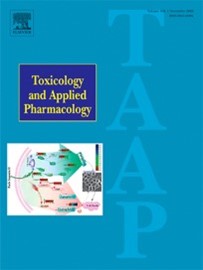
Saleh group has co-authored a journal article in Toxicology and Applied Pharmacology, titled: “Hydroxyl functionalized multi-walled carbon nanotubes modulate immune responses without increasing 2009 pandemic influenza A/H1N1 virus titers in infected mice”. Senior Ph.D. student Indu V. Sabaraya is a co-author in this paper. This paper shows that multiwalled carbon nanotubes modify cytokine and chemokine responses that control aspects of host defenses which may play a greater role in mitigating influenza A (H1N1 strain) infections.
Read MoreGrowing use of carbon nanotubes (CNTs) have garnered concerns regarding their association with adverse health effects. Few studies have probed how CNTs affect a host's susceptibility to pathogens, particularly respiratory viruses. We reported that exposure of lung cells and mice to pristine single-walled CNTs (SWCNTs) leads to significantly increased influenza virus H1N1 strain A/Mexico/4108/2009 (IAV) titers in concert with repressed antiviral immune responses. In the present study, we investigated if hydroxylated multi-walled CNTs (MWCNTs), would result in similar outcomes. C57BL/6 mice were exposed to 20 μg MWCNTs on day 0 and IAV on day 3 and samples were collected on day 7. We investigated pathological changes, viral titers, immune-related gene expression in lung tissue, and quantified differential cell counts and cytokine and chemokine levels in bronchoalveolar lavage fluid. MWCNTs alone caused mild inflammation with no apparent changes in immune markers whereas IAV alone presented typical infection-associated inflammation, pathology, and titers. The co-exposure (MWCNTs + IAV) did not alter titers or immune cell profiles compared to the IAV only but increased concentrations of IL-1β, TNFα, GM-CSF, KC, MIPs, and RANTES and inhibited mRNA expression of Tlr3, Rig-i, Mda5, and Ifit2. Our findings suggest MWCNTs modulate immune responses to IAV with no effect on the viral titer and modest pulmonary injury, a result different from those reported for SWCNT exposures. This is the first study to show that MWCNTs modify cytokine and chemokine responses that control aspects of host defenses which may play a greater role in mitigating IAV infections.
July 10, 2020 SusNWaTr group has published a journal article in Plos One, titled: “Suspended multiwalled, acid-functionalized carbon nanotubes promote aggregation of the opportunistic pathogen Pseudomonas aeruginosa”.
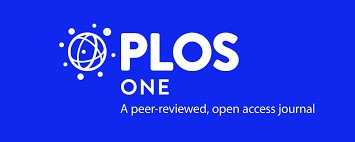
SusNWaTr group has published a journal article in Plos One, titled: “Suspended multiwalled, acid-functionalized carbon nanotubes promote aggregation of the opportunistic pathogen Pseudomonas aeruginosa”. One of the lead authors in this paper is Indu V. Sabaraya, a senior Ph.D. student in Saleh group. This article presents interesting results showing enhanced Pseudomonas aeruginosa cell-accumulation around functionalized multiwalled carbon nanotubes.
Abstract: The increasing prevalence of carbon nanotubes (CNTs) as components of new functional materials has the unintended consequence of causing increases in CNT concentrations in aqueous environments. Aqueous systems are reservoirs for bacteria, including human and animal pathogens, that can form biofilms. At high concentrations, CNTs have been shown to display biocidal effects; however, at low concentrations, the interaction between CNTs and bacteria is more complicated, and antimicrobial action is highly dependent upon the properties of the CNTs in suspension. Here, impact of low concentrations of multiwalled CNTs (MWCNTs) on the biofilm-forming opportunistic human pathogen Pseudomonas aeruginosa is studied. Using phase contrast and confocal microscopy, flow cytometry, and antibiotic tolerance assays, it is found that sub-lethal concentrations (2 mg/L) of MWCNTs promote aggregation of P. aeruginosa into multicellular clusters. However, the antibiotic tolerance of these “young” bacterial-CNT aggregates is similar to that of CNT-free cultures. Overall, our results indicate that the co-occurrence of MWCNTs and P. aeruginosa in aqueous systems, which promotes the increased number and size of bacterial aggregates, could increase the dose to which humans or animals are exposed.
June 14, 2020 SusNWaTr group has published a journal article in Science of the Total Environment, titled: “Seasonal contamination of well-water in flood-prone colonias and other unincorporated U.S. Communities”.
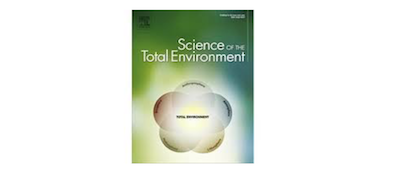
SusNWaTr group has published a journal article in Science of the Total Environment, titled: “Seasonal contamination of well-water in flood-prone colonias and other unincorporated U.S. Communities”. The lead author of this paper is Lewis Stetson Rowles III, a final year Ph.D. student in Saleh group. Areeb Hossain (an undergraduate student) and Irwing Ramirez-Sanchez (postdoctoral scholar) are co-authors of this paper. This article presents unique seasonal variation of water quality in the colonias in Nueces County, TX and illustrates possible occurrence of such water issues in similar unincorporated communities, elsewhere in the U.S.
Abstract: Many of the six million residents of unincorporated communities in the United States depend on well-water to meet their needs. One group of unincorporated communities is the colonias, located primarily in several Southwestern U.S. states. Texas is home to the largest number of these self-built communities of mostly low-income families lacking basic infrastructure. While some states have regulations that mandate minimum infrastructure for these communities, water and sewage systems are still lacking for many of their residents. Unprotected wells and self-built septic/cesspool systems serve as the primary infrastructure for many such colonias. This research was designed to probe how wells and septic/cesspool systems are influenced by heavy rainfall events. Such events are hypothesized to impact water quality with regard to human health. Inorganic and microbiological water quality of the wells in nine colonias located in the Nueces County, Texas were evaluated during dry and wet periods. Nueces County was selected as an example based on its flooding history and the fact that many colonias there depend entirely on well-water and septic/cesspool systems. The results demonstrate that well-water quality in these communities varies seasonally between arsenic (up to 35 µg/L) and bacterial contamination (Escherichia coli), dependent on the amount of rainfall, which leaves this population vulnerable to health risks during both wet and dry periods. Microbial community analyses were also conducted on selected samples. To explore similar seasonal contamination of well-water, an analysis of unincorporated communities, flooding frequency, and arsenic contamination in wells was conducted by county throughout the United States. This nationwide analysis indicates that unincorporated communities elsewhere in the United States are likely experiencing comparable challenges for potable water access because of a confluence of socioeconomic, infrastructural, and policy realities.
May 23, 2020 SusNWaTr group has published a journal article in Science of the Total Environment, titled: “Microplastic Particle versus Fiber Generation During Photo-Transformation in Simulated Seawater”.

SusNWaTr group has published a journal article in Science of the Total Environment, titled: “Microplastic Particle versus Fiber Generation During Photo-Transformation in Simulated Seawater”. The lead authors of this paper are Rahul Naik, a former M.S. student and Lewis Stetson Rowles III, a final year Ph.D. student in Saleh group. Areeb Hossain (an undergraduate student) and Megan Yen (undergraduate student) are co-authors of this paper. This article presents interesting results that show microfiber vs. microplastic particle generation upon UV-irradiation and the difference in microplastic generation is based on plastic types.
Abstract: Microplastic particles and fibers are increasingly being detected in our surface and ground waters as well as within a wide range of aquatic species. Their presence in the environment is largely due to in situ generation from physical and chemical weathering of larger plastics, and thus has left environmental community concerned in the post-banned era of microbead use in personal care products through the passage of Microbead-Free Waters Act in the United States. To improve understanding of secondary microplastic formation, accelerated weathering has been conducted on four materials (high-density polyethylene, high impact polystyrene, nylon 6, and polypropylene) under ultraviolet radiation (equivalent to 44 days in full sun) in simulated seawater. Physical and chemical characterization of the plastics were completed following ultraviolet exposure. This simulated weathering generated microfibers from high-density polyethylene and nylon 6, while high impact polystyrene and polypropylene did not physically degrade. The techniques used were applied to sediment samples containing plastic pellets collected from Cox Creek in Port Comfort, TX (near a large plastics manufacturer), which were purified for analysis and were found to contain microplastics composed of polypropylene and polyethylene. These findings can be used to determine degradation pathways and plastic source tracking, which can facilitate risk assessment and environmental management.
April 21, 2020 SusNWaTr group has received funding from the Nanoscale Interactions Program of the National Science Foundation (NSF). The project is titled: "RAPID: Collaborative Research: Transforming passive protective face masks toward active capture and inactivation of coronavirus with nano-assisted surfactant modification".

SusNWaTr group has received funding from the Nanoscale Interactions Program of the National Science Foundation (NSF). The project is titled: "RAPID: Collaborative Research: Transforming passive protective face masks toward active capture and inactivation of coronavirus with nano-assisted surfactant modification". Dr. Saleh is the PI in this project and the co-PIs are Drs. Tara Sabo-Attwood, John Lednicky, and Cindy Prins of University of Florida, Gainesville. The project will study the role of surfactants and carbon materials embedded on N95 and surgical mask surfaces to inactivate SARS-CoV-2 strain, responsible for COVID-19. This research will make masks active and facilitate safe reuse over a longer time.
Summary: Novel coronavirus disease is caused by SARS-CoV-2, an extremely virulent strain of coronavirus that is responsible for an increasing number of illnesses and deaths, globally. According to the World Health Organization, ?SARS-CoV-2 is transmitted via droplets and fomites during close unprotected contact between an infector and an infectee?. A recent study has shown that these virions can be airborne for at least 30 minutes and be active on the aerosol droplets up to three hours. Non-pharmaceutical protection is essential to stunt the spread of this virus. As of March 19, 2020, the Center for Disease Control?s official guidelines include non-optimal reuse of surgical masks for extended periods of time. Then, on March 27, 2020, the World Health Organization declared a critical emergency on personal protection equipment. The reuse of masks puts healthcare workers, first line responders, patients, and the community at risk. The aim of this research project between the University of Texas-Austin and the University of Florida Health Shands Hospital is to develop and implement a rapid protocol for extended use of surgical and N95 masks. The researchers will develop a fast, simple procedure for turning passive masks into active protective gear.
This proposal addresses a critical need to improve personal protection equipment during the coronavirus crisis. A new extended use protocol for masks will render immediate benefits to the healthcare community. An enhanced mechanistic understanding of virion capture and inactivation at nano-bio interfaces will have wide applicability in the design of personal protective equipment. This research project has the following objectives: (i) obtain masks from the Shands hospital, treat them with surfactants, ultraviolet-C ray, and steam, and then characterize the efficacy of each treatment using viability tests, (ii) modify mask surfaces with surfactant-modified (sodium lauryl sulfate, butadines, or stearoyl lactylate) carbon particles (activated carbon, carbon quantum dots, or nano-diamond) at different ratios and moisture content and then test their efficacy in attaching and inactivating coronaviruses, (iii) understand the mechanisms of virus attachment and inactivation, and (iv) implement a rapid extended mask-use program. The outcomes from this project should have critical and widespread scientific and public health impacts. The modified masks could provide needed support to the depleted mask-inventory of health care providers.
This award reflects NSF's statutory mission and has been deemed worthy of support through evaluation using the Foundation's intellectual merit and broader impacts review criteria.
February 13, 2019 SusNWaTr group has published an article in Environment International, titled: “Transformation potential of cannabinoids during their passage through engineered water treatment systems: A perspective”.
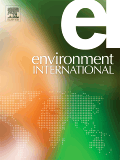
SusNWaTr group has published an article in Environment International, titled: “Transformation potential of cannabinoids during their passage through engineered water treatment systems: A perspective”. Dr. Saleh is the corresponding author and Lewis Stetson Rowles III, a final year PhD student, is a co-author of this article.
Abstract: Cannabinoids are incipient contaminants with limited literature in the context of water treatment. With increasing positive public opinion toward legalization and their increasing use as a pharmaceutical, cannabinoids are expected to become a critical class of pollutant that requires attention in the water treatment industry. The destructive removal of cannabinoids via chlorination and other oxidation processes used in drinking water and wastewater treatment requires careful investigation, because the oxidation and disinfection byproducts (DBPs) may pose significant risks for public health and the environment. Understanding transformation of cannabinoids is the first step toward the development of management strategies for this emerging class of contaminant in natural and engineered aquatic systems. This perspective reviews the current understanding of cannabinoid occurrence in water and its potential transformation pathways during the passage through drinking water and wastewater treatment systems with chlorination process. The article also aims to identify research gaps on this topic, which demand attention from the environmental science and engineering community.
November 25, 2019 SusNWaTr group has published an article in Clean Water, a Nature Group Journal, titled: “Mesoporous Activated Carbon Shows Superior Adsorption Affinity for 11-Nor-9-Carboxy-Δ9-Tetrahydrocannabinol in Water”.

SusNWaTr group has published an article in Clean Water, a Nature Group Journal, titled: “Mesoporous Activated Carbon Shows Superior Adsorption Affinity for 11-Nor-9-Carboxy-Δ9-Tetrahydrocannabinol in Water”. Lewis Stetson Rowles III and Dr. Saleh are co-authors of this article.
Abstract: Increasing cannabinoid use with the incipient favorable public discourse raises concerns about their environmental release and potential impacts. Concentration of common cannabinoids and their metabolites (e.g., THC and THC-COOH) are already detected in source waters and engineered water systems across the globe with a rising trajectory. This study examines the adsorption of THC and THC-COOH onto activated carbons in surface water-relevant concentrations and investigates the effect of carbon’s physicochemical properties. At higher equilibrium concentration (i.e., Ce > 300 μg/L), adsorption of cannabinoids correlates with the sorbent-specific surface area. On the contrary, at lower concentrations (i.e., Ce = 0.1–100 μg/L),
cannabinoid adsorption was predominantly controlled by pore size of the carbon. More specifically, when the surface area was not limited (i.e., dilution conditions), cannabinoid molecules appeared to have preferably attached within the mesopores. The adsorption mechanism deciphered in the study will facilitate in selection of commercial activated carbon to remove cannabinoids in drinking water treatment systems. This work will also provide a baseline for further research on removal of other cannabinoids.
September 13, 2019 SusNWaTr group has published an article in Science of the Total Environment, titled: “Water Quality and Associated Microbial Ecology in Selected Alaskan Native Communities: Challenges in Off-the-Grid Water Supplies”.
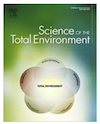
SusNWaTr group has published an article in Science of the Total Environment, titled: “Water Quality and Associated Microbial Ecology in Selected Alaskan Native Communities: Challenges in Off-the-Grid Water Supplies”. Lewis Stetson Rowles III is the lead author and Dr. Saleh is the corresponding author of this article. This study evaluates water quality of nine remote Native Alaskan communities.
Abstract: The availability of safe water for potable purposes in Alaska Native communities is limited due to naturally occurring metals and contaminants released from anthropogenic activities, such as drilling and mining. The impacts of climate change are magnified in the arctic and sub-arctic regions and thus have the potential to mobilize contaminants and exacerbate the water contamination problem. Alaska Native communities are vulnerable to such changes in their water quality because of their remote location and limited access to resources. This study initiates an assessment of water quality, including its microbial ecology, in off-the-grid Alaskan water supplies (i.e., primarily groundwater wells). In particular, water quality data were collected from nine communities (22 ground water wells). Water quality analyses included basic water quality parameters, a suite of metals relevant to human health, and microbial community composition. Results revealed location-specific elevated arsenic concentrations based on the underlying geological formation, particularly in the areas located in the geological formation of the McHugh Complex. Diverse microbial communities were observed, and the grouping appeared to be based on elevation. These findings present evidence of compromised water quality in an understudied area in the United States. The results from this study should be considered as a snapshot in time, which highlight the importance for further systematic studies in similar off-the-grid communities.
August 15, 2019 SusNWaTr group has received funding from the ConTEX Program. The project is titled: "Engineering Nano-Enabled Water Treatment Solutions for Communities in Oaxaca, MX and Colonias in Texas".

SusNWaTr group has received funding from the ConTEX Program, a joint funding mechanism established by the Consejo Nacional de Ciencia y Tecnología (CONACYT) of Mexico and the University of Texas System. The project is titled: "Engineering Nano-Enabled Water Treatment Solutions for Communities in Oaxaca, MX and Colonias in Texas". Dr. Saleh is the PI of this project. The project will study the role of nanomaterials in harnessing microwave radiation to inactivate pathogens and will also evaluate water quality in three communities near Oaxaca, Mexico.
Summary: This project aims to engineer affordable water treatment solutions for ethnically diverse and low-income communities in Oaxaca, Mexico and for low-income immigrant Mexican communities in the Texas-Mexico border region. The project will operate under the umbrella of nanotechnology and will design appropriate technological solutions to disinfect water for marginalized communities in these regions. Oaxaca, a southern rural state of Mexico with a large indigenous population and unique socio-political challenges, is surprisingly similar in water management practices and consumer affordability to those in the colonias, which comprise of self-built dwellings and manufactured homes (trailers) that lack basic services. Compromised water quality and lack of information on water-use have left these communities vulnerable to water borne diseases. The proposed project will engineer appropriate water treatment solutions using the exceptional functionality of nanomaterials and technological breakthrough achieved in the lead PI’s laboratory at UT. The long-standing relationship between UT’s multidisciplinary team and the collaborators from CIIDIR will be leveraged to integrate cutting edge materials science and environmental engineering with socio-economic and socio-political analyses.
June 14, 2019 Dr. Saleh has co-authored a journal article in Nanotoxicology, titled: “Single-walled Carbon Nanotubes Repress Viral-Induced Defense Pathways through Oxidative Stress”.

Dr. Saleh has co-authored a journal article in Nanotoxicology, titled: “Single-walled Carbon Nanotubes Repress Viral-Induced Defense Pathways through Oxidative Stress”. This article is an outcome of a collaboration with Dr. Sabo-Attwood of University of Florida, Gainesville.
Abstract: In situ pre-exposure of lung epithelial cells or in vitro exposure of mice to pristine single-walled carbon nanotubes (SWCNTs) leads to a reduced anti-viral immune response to infection with influenza A virus H1N1 (IAV), resulting in significant increases in viral titers. However, the molecular mechanisms that contribute to this effect have not been elucidated. In the present study, we identified the retinoic acid-induced gene I (RIG-I)/mitochondrial antiviral signaling (MAVS) pathway as a target of SWCNT-induced oxidative stress in small airway epithelial cells (SAEC). Specifically, SWCNTs reduce mitochondrial membrane potential and induce autophagy without altering overall mitochondrial respiratory capacity. Most notable is the finding that SWCNTs impair docking of the activated RIG-I/MDA5 complex with mitochondrial MAVS, which impedes downstream activation of anti-viral responses that include mRNA transcription of interferon-induced proteins with tetratricopeptide repeats (IFITs) and other cytokines. Furthermore, application of the antioxidant n-acetyl-L-cysteine significantly alleviates inhibited gene expression levels, MAVS signalosome formation, and increased viral titers in cells treated with SWCNTs+IAV. These data provide evidence of targeted impairment of anti-viral signaling networks that are vital to immune defense mechanisms in lung cells, contributing to increased susceptibility to IAV infections.
June 14, 2019 Dr. Saleh has co-led a journal article in Environmental Science & Technology, titled: “Next-Generation Multifunctional Carbon-Metal Nanohybrids for Energy and Environmental Applications”.

Dr. Saleh has co-led a journal article in Environmental Science & Technology, titled: “Next-Generation Multifunctional Carbon-Metal Nanohybrids for Energy and Environmental Applications”. This article is an outcome of a collaboration with Dr. Dengjun Wang and Chunming Su of Environmental Protection Agency.
Abstract: Nanotechnology has unprecedentedly revolutionized human societies over the past decades and will continue to advance our broad societal goals in the coming decades. The research, development, and particularly the application of engineered nanomaterials have shifted the focus from “less efficient” single-component nanomaterials toward “superior-performance”, next-generation multifunctional nanohybrids. Carbon nanomaterials (e.g., carbon nanotubes, graphene family nanomaterials, carbon dots, and graphitic carbon nitride) and metal/metal oxide nanoparticles (e.g., Ag, Au, CdS, Cu2O, MoS2, TiO2, and ZnO) combinations are the most commonly pursued nanohybrids (carbon–metal nanohybrids; CMNHs), which exhibit appealing properties and promising multifunctionalities for addressing multiple complex challenges faced by humanity at the critical energy–water–environment (EWE) nexus. In this frontier review, we first highlight the altered and newly emerging properties (e.g., electronic and optical attributes, particle size, shape, morphology, crystallinity, dimensionality, carbon/metal ratio, and hybridization mode) of CMNHs that are distinct from those of their parent component materials. We then illustrate how these important newly emerging properties and functions of CMNHs direct their performances at the EWE nexus including energy harvesting (e.g., H2O splitting and CO2 conversion), water treatment (e.g., contaminant removal and membrane technology), and environmental sensing and in situ nanoremediation. This review concludes with identifications of critical knowledge gaps and future research directions for maximizing the benefits of next-generation multifunctional CMNHs at the EWE nexus and beyond.
June 06, 2019 Dr. Saleh has assumed one of the Editor’s role for Journal of Hazardous Material. It is one of the top environmental science and engineering journal with an impact factor of 7.65.

Dr. Saleh has assumed one of the Editor’s role for Journal of Hazardous Material. It is one of the top environmental science and engineering journal with an impact factor of 7.65. The Journal of Hazardous Materials is an inter-disciplinary journal publishing high quality research on the understanding and mitigation of hazards and risks of certain materials on public health, and the environment. You can find more details on the journal’s editorial board here: link
May 09, 2019 Dr. Saleh has co-authored a journal article in NanoImpact, titled: “Utilization of Near Infrared Fluorescence Imaging to Track and Quantify the Pulmonary Retention of Single-Walled Carbon Nanotubes in Mice”.
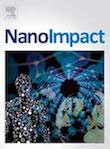
Dr. Saleh has co-authored a journal article in NanoImpact, titled: “Utilization of Near Infrared Fluorescence Imaging to Track and Quantify the Pulmonary Retention of Single-Walled Carbon Nanotubes in Mice”. This article is an outcome of a collaboration with Dr. Sabo-Attwood of University of Florida, Gainesville.
Abstract: As nanomaterials are used in a wide array of applications, investigations regarding health impacts associated with inhalation are a concern. Reports show that exposure to single-walled carbon nanotubes (SWCNTs) can induce fibrosis, allergic-type reactions, and pathogen susceptibility. Airway clearance is known to play a primary role in these disease states, yet SWCNT detection in biological systems is challenging. Common techniques, such as electron microscopy, lack spatial resolution and specificity to delineate SWCNTs in carbon-based organisms. Here we validated a near-infrared fluorescence imaging (NIRFI) system to track and semi-quantify SWCNTs over 21 days in tissues of mice exposed intratracheally to 1 dose of SWCNTs. In tandem, we optimized a NIRF-based spectrometry method to quantify SWCNTs, showing that NIRFI was consistent with SWCNT burdens quantified by NIRF spectroscopy in whole lung tissue homogenates. Finally, NIRFI was utilized to localize SWCNTs on lung tissue sections used for pathological analysis. Results revealed that SWCNTs remained in the lung over 21 days and were consistent with alveolar wall restructuring and granuloma formation. This study is the first to quantify SWCNTs in mouse lungs using both semi-quantitative tracking and quantitative mass measurements using NIRF, highlighting this as a sensitive and specific technique for assessing SWCNT clearance in vivo.
April 09, 2019 Dr. Saleh has co-authored a journal article in ES: Nano, titled: “In situ remediation of subsurface contamination: Opportunities and challenges for nanotechnology and advanced materials”.

Dr. Saleh has co-authored a journal article in ES: Nano, titled: “In situ remediation of subsurface contamination: Opportunities and challenges for nanotechnology and advanced materials”. This article is an outcome of a recent workshop on nano-remediation that took place in Nankai University, Tianjin, China.
Abstract: Complex subsurface contamination domains and limited efficacy of existing treatment approaches pose significant challenges to site remediation and underscore the need for technological innovation to develop cost-effective remedies. Here, we discuss opportunities for nanotechnology-enabled in situ remediation technologies to address soil and groundwater contamination. The discussion covers candidate nanomaterials, applications of nanomaterials to complement existing remediation approaches and address emerging contaminants, as well as the potential barriers for implementation and strategies and research needs to overcome these barriers. Promising nanomaterials in subsurface remediation include multi-functional nanocomposites for synergistic contaminant sequestration and degradation, selective adsorbents and catalysts, nano-tracers for subsurface contaminant delineation, and slow-release reagents enabled by stimuli-responsive nanomaterials. Limitations on mixing and transport of nanomaterials in the subsurface are severe constraints for in situ applications of these materials. Mixing enhancements are needed to overcome transport limitations in laminar flow environments. Reactive nanomaterials may be generated in situ to remediate contamination in low hydraulic conductivity zones. Overall, nano-enabled remediation technologies may improve remediation performance for a broad range of legacy and emerging contaminants. These technologies should continue to be developed and tested to discern theoretical hypotheses from feasible opportunities, and to establish realistic performance expectations for in situ remediation techniques using engineered nanomaterials alone or in combination with other technologies.
March 20, 2018 SusNWaTr group has published an article in Science of the Total Environment, titled: “Interaction between functionalized multiwalled carbon nanotubes and MS2 bacteriophages in water”. The lead authors of this paper are Anna Merryman and Indu V. Sabaraya.

SusNWaTr group has published a journal article in Science of the Total Environment, titled: “Interaction between functionalized multiwalled carbon nanotubes and MS2 bacteriophages in water”. The lead authors of this paper are Anna Merryman, a former M.S. student, and Indu V. Sabaraya, a current Ph.D. student in the Saleh group. Lewis Stetson Rowles III (senior Ph.D. student), Aleesha Toteja (undergraduate student), and Sofia (undergraduate student) are co-authors of this paper. This article presents interesting results that show preferential interaction between multiwalled carbon nanotubes and MS2 capsids.
Abstract: Fate and transport of carbon nanomaterials can be strongly dependent on the interaction with secondary particulates in the aquatic systems. Bio-particulates in water, e.g., viruses with charged and hydrophobic surface moieties, may profoundly influence the interfacial behavior and hence the environmental fate of nanomaterials (and vice versa). This study systematically evaluates the interfacial interaction of acid-functionalized multiwalled carbon nanotubes (MWNTs) with MS2 bacteriophages, or heteroaggregation behavior of these particulates, under mono- and di-valent cations and with Suwannee River humic acid (SRHA). Results indicate that the highest concentration of MS2 (i.e., MWNT:MS2 of 100:1) renders exceptional stability of MWNTs, even in high salinity conditions. However, at lower MS2 concentrations (i.e., MWNT:MS2 of 1,000:1 and 10,000:1), the suppression of MWNT heteroaggregation rate is not as significant. The observed enhanced stability is likely caused by the preferential attachment of the MS2 capsids onto MWNT surfaces, which is mediated by electrostatic attraction (between negatively charged oxygen-containing moieties on MWNTs and positively charged amino acid residues on MS2 surfaces) and/or by MS2 capsids with positive hydropathy index (indicating strong hydrophobicity). Presence of SRHA also shows stability enhancement; however, at lower MS2 concentrations, SRHA dominated the heteroaggregation behavior. These results implicate that preferential interaction between virus capsids (i.e., MS2 and may be other waterborne viruses) and carbonaceous nanomaterials may influence environmental transport of both in aquatic environments.
March 19, 2018 SusNWaTr group has co-authored a journal article in NanoImpact, titled: “Multi-walled carbon nanotubes inhibit estrogen receptor expression in vivo and in vitro through transforming growth factor beta1”. Dr. Saleh and Dr. Dipesh Das are co-authors of this article.

SusNWaTr group has co-authored a journal article in NanoImpact, titled: “Multi-walled carbon nanotubes inhibit estrogen receptor expression in vivo and in vitro through transforming growth factor beta1”. Dr. Saleh and Dr. Dipesh Das, a recent graduate of SusNWaTr group, are co-authors of this article.
Abstract: Exposure to multi-walled carbon nanotubes (MWCNTs) is suspected to contribute to pulmonary fibrosis through modulation of transforming growth factor beta1 (TGF-β1). There is growing evidence that estrogen signaling is important in pulmonary function and modulates pro-fibrogenic signaling in multiple models of pulmonary fibrosis, however an interaction between MWCNT exposure and estrogen signaling in the lung is not known. The purpose of this work was to determine whether estrogen signaling in the lung is a target for MWCNTs and to identify potential signaling mechanisms mediating MWCNT-induced responses using a whole-body inhalation mouse model and an in vitro human lung cell model. Mice exposed to MWCNTs had reduced mRNA expression of estrogen receptor alpha and beta (Esr1 and Esr2, respectively) in lung tissue at multiple time-points post-exposure, whereas expression of g-protein coupled estrogen receptor 1 (Gper1) was more variable. We localized ESR1 protein expression as primarily associated with bronchioles and within in inflammatory macrophages. The reduction in estrogen receptor expression was concomitant to an increase in TGF-β1 levels in the bronchoalveolar lavage fluid (BALF) of MWCNT-exposed animals. We confirmed a role for TGF-β1 in mediating MWCNT-induced repression of ESR1 mRNA expression using a TGF-β type-I receptor inhibitor in bronchial epithelial cells in vitro. Overall these results highlight a novel mechanism of MWCNT-induced signaling where MWCNT-induced regulation of TGF-β1 represses estrogen receptor expression. Dysregulated estrogen signaling through altered receptor expression may have potential consequences on lung function.
January 21, 2019 SusNWaTr group has published a viewpoint in Environmental Science and Technology, titled: “The Genesis of a New Environmental Concern: Cannabinoids in our Water Systems”. Dr. Saleh is the lead author of this article.

SusNWaTr group has published a viewpoint in Environmental Science and Technology, titled: “The Genesis of a New Environmental Concern: Cannabinoids in our Water Systems”. Dr. Saleh is the lead author of this article. This viewpoint discusses the potential environmental implications of cannabinoids in water.
December 10, 2018 SusNWaTr has co-authored an article in Environmental Science: Water Research & Technology, titled: “Removal of poly- and per-fluoroalkyl substances from aqueous systems by nano-enabled water treatment technologies”. Dr. Saleh is the lead author, and Craig and Indu are co-authors.
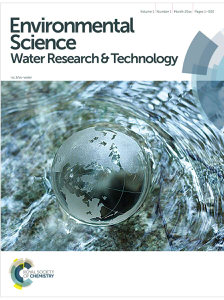
SusNWaTr group has co-authored a journal article in Environmental Science: Water Research & Technology, titled: “Removal of poly- and per-fluoroalkyl substances from aqueous systems by nano-enabled water treatment technologies”. Dr. Saleh is the lead author of this article and Craig Ayres and Indu V. Sabaraya, PhD students in the group are co-authors.
Abstract:Exceptional properties at the nano-scale, if appropriately harnessed, will lead to innovations in water treatment. Nanomaterials can enable treatment processes with accelerated reaction kinetics, self-healing or self-regeneration abilities, and a high degree of selectivity for targeted pollutant removal. These materials can also introduce new pathways for the removal of contaminants that are challenging to degrade employing traditional techniques. One such class of contaminants is poly- and per-fluoroalkyl substances (PFAS), which are widely detected in waterways of the U.S. and drinking water supplies. U.S. Environmental Protection Agency (EPA) has listed two PFAS (i.e., perfluorooctanesulfonic acid or PFOS and perfluorooctanoic acid or PFOA) in the Contaminant Candidate List and recently has revised the lifetime health advisories. PFAS molecules are persistent in the environment over long periods because they are not photolyzed or biodegraded. Current mitigation technologies mostly depend on non-destructive phase transfer processes (e.g., adsorption, filtration, or ion exchange) which results in a concentrated waste stream. Few destructive mitigation methods transform PFAS by cleaving C-C bonds but it is not clear if the transformation products (e.g., shorter chain PFAS) are less toxic or less persistent. Thus, the central challenge for PFAS transformation lies in cleaving the strong C-F bonds. Nanomaterials can enable treatment options by providing high-energy reaction pathways; e.g., electrolysis, thermolysis, or photolysis. This perspective aims to present a critical review on reported PFAS removal/destruction techniques, provide molecular-level insights into possible removal/destruction pathways, and propose potential nano-enabled remediation options for these persistent contaminants.
November 15, 2018 SusNWaTr group has co-authored a journal article in Scientific Reports (a nature group journal), titled: “Adsorption of phosphate on iron oxide doped halloysite nanotubes”. Visiting scholar Dema A. Al-Masri from Hamid Bin Khalifa University at Doha, Qatar, is the lead author of this article.

SusNWaTr group has co-authored a journal article in Scientific Reports (a nature group journal), titled: “Adsorption of phosphate on iron oxide doped halloysite nanotubes”. Visiting scholar Dema A. Al-Masri from Hamid Bin Khalifa University at Doha, Qatar, is the lead author of this article. This work was jointly funded by CRDF Global and U.S. National Science Foundation.
Abstract:Excess phosphate in water is known to cause eutrophication, and its removal is imperative. Nanoclay mineral sorbents are widely used in environmental remediation due to their low-cost, adequate availability, environmental compatibility, and adsorption efficiency. However, the removal of anions with nanoclays is not very effective because of electrostatic repulsion from clay surfaces with a net negative charge. Among clay minerals, halloysite nanotubes (HNTs) possess a negatively charged exterior and a positively charged inner lumen. This provides an increased affinity for anion removal. In this study, HNTs are modified with nano-scale iron oxide (Fe2O3) to enhance the adsorption capacity of the nanosorbent. A detailed characterization of the raw and iron oxide modified HNTs (Fe-HNT) is conducted. Influences of iron oxide loading, adsorbent dosage, contact time, pH, initial phosphate concentration, and coexisting ions on the phosphate adsorption capacity are studied. Results demonstrate that adsorption on Fe-HNT is pH-dependent with fast initial adsorption kinetics (i.e., 30% of the phosphate is removed within the first 30 s). The adsorption kinetics follows a pseudo-second order process. The underlying mechanism is identified as a combination of electrostatic attraction, ligand exchange, and Lewis acid-base interactions. The developed nanomaterial provides promising results for its application in water/wastewater treatment.
October 30, 2018 Areeb Hossain, a junior in biology working in SusNWaTr group, has received the Fall 2018 Undergraduate Research Fellowship. His project evaluates transformation and removal of microplastics from aqueous environment.

Areeb Hossain, a junior in biology working in SusNWaTr group, has received the Fall 2018 Undergraduate Research Fellowship. Areeb has been working on an exciting project that evaluates transformation and removal of microplastics from aqueous environment. Congratulations Areeb!
August 10, 2018 SusNWaTr group has co-authored a journal article in RSC Advances with Peng Wang’s group, titled: “Annealing temperature effects on photoelectrochemical performance of bismuth vanadate thin film photoelectrodes”.
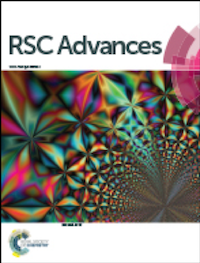
SusNWaTr group has co-authored a journal article in RSC Advances, titled: “Annealing temperature effects on photoelectrochemical performance of bismuth vanadate thin film photoelectrodes”. This article is a result of the successful collaboration between Peng Wang’s group and SusNWaTr group.
Abstract:The effects of annealing treatment between 400 °C and 540 °C on crystallization behavior, grain size, electrochemical (EC) and photoelectrochemical (PEC) oxygen evolution reaction (OER) performances of bismuth vanadate (BiVO4) thin films are investigated in this work. The results show that higher temperature leads to larger grain size, improved crystallinity, and better crystal orientation for the BiVO4 thin film electrodes. Under air-mass 1.5 global (AM 1.5) solar light illumination, the BiVO4 thin film prepared at a higher annealing temperature (500–540 °C) shows better PEC OER performance. Also, the OER photocurrent density increased from 0.25 mA cm−2 to 1.27 mA cm−2 and that of the oxidation of sulfite, a hole scavenger, increased from 1.39 to 2.53 mA cm−2 for the samples prepared from 400 °C to 540 °C. Open-circuit photovoltage decay (OCPVD) measurement indicates that BiVO4 samples prepared at the higher annealing temperature have less charge recombination and longer electron lifetime. However, the BiVO4 samples prepared at lower annealing temperature have better EC performance in the absence of light illumination and more electrochemically active surface sites, which are negatively related to electrochemical double-layer capacitance (Cdl). Cdl was 0.0074 mF cm−2 at 400 °C and it decreased to 0.0006 mF cm−2 at 540 °C. The OER and sulfide oxidation are carefully compared and these show that the efficiency of charge transport in the bulk (ηbulk) and on the surface (ηsurface) of the BiVO4 thin film electrode are improved with the increase in the annealing temperature. The mechanism behind the light-condition-dependent role of the annealing treatment is also discussed.
August 9, 2018 Second year PhD student, Indu V. Sabaraya has received the prestigious 2018-2019 Environmental Research & Education Foundation (EREF) Scholarship. Her research is on next generation 2D nanomaterial interaction in landfills.
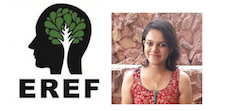
Second year PhD student, Indu V. Sabaraya has received the prestigious 2018-2019 Environmental Research & Education Foundation (EREF) Scholarship. Indu’s research on next generation 2D nanomaterial interaction in the landfill environment will be the focus of this research. SusNWaTr group congratulates Indu on receiving this prestigious award.
https://erefdn.org/scholarship-program/current-scholars/
July 27, 2018 SusNWaTr group has received funding from the Environmental Engineering Program of the National Science Foundation. Dr. Saleh is the PI and will collaborate with Drs. Kirisits and Lawler to develop his microwave-based disinfection technology.

SusNWaTr group has received funding from the Environmental Engineering Program of the National Science Foundation (NSF). The project is titled: " Inactivation of Legionella pneumophila harbored by amoebae using a nano-enabled alternative technology: Application and outreach to the colonias in Texas". Dr. Saleh is the lead PI of the project and will collaborate with Dr. Mary Jo Kirisits and Dr. Desmond Lawler to develop his microwave-based disinfection technology with this funding. The outreach component of the project will focus on working with low and medium income colonias communities along the U.S.-Mexico border.
Abstract:Legionnaires’ disease, a severe and deadly form of pneumonia, is caused by the bacterial pathogen Legionella pneumophila; several outbreaks of this waterborne disease have occurred in the U.S. since 1976. Exposure occurs when contaminated water droplets are inhaled (e.g., during showering) or aspirated. L. pneumophila can be harbored and protected from disinfection by free-living amoebae, which tend to be resistant to traditional disinfection processes. Amoebae take in L. pneumophila by phagocytosis (i.e., to ingest by engulfment) and act as a ‘Trojan horse’ for pathogen transport, thereby increasing risk for the spread of Legionnaires’ disease. This project aims to develop a nano-enabled disinfection technology that can harness low-energy microwave (MW) radiation and inactivate L. pneumophila for waters relevant to Texas colonias (self-built communities), which are home to 400,000 low-income (<$15,000/household) people.
The goal of the proposed irradiation-based technology is to generate interfacial heat and reactive oxygen species (ROS) to inactivate L. pneumophila harbored by amoebae. Amoebae will be lysed via interfacial heating, and the released L. pneumophila will be inactivated by heat and ROS. The proposed research will deploy fundamental nanoscience to develop a point-of-use (POU) and community-scale water treatment technology. The specific technical objectives of the proposed research plan are to (i) synthesize, characterize, and test MW-harnessing nanomaterials, (ii) understand the mechanisms of microbial inactivation by this MW-based nanotechnology, and (iii) engineer two devices containing immobilized nanomaterials to effectively inactivate L. pneumophila harbored by amoebae. The research will capitalize on the scientific advantages of novel MW spectral conversion to provide safe drinking water to low-income residents of the Texas colonias and beyond. Outreach activities will occur in elementary schools and colonias located in three school districts (two in El Paso County and one in Hidalgo County, both of which have high concentrations of colonias). Hands-on educational activities related to the research will be conducted in the schools, and water sampling and household surveys will be conducted in the colonias to gather information on water quality, water use, water-related health issues, and socioeconomic conditions. The outreach is unique because the information it yields will be utilized in the device design, thereby enabling the development of a socially-embedded technology. Also, minority/female students will be recruited to the project; the real-life context of the research will be attractive to such students.
June 26, 2018 SusNWaTr group has published a journal article in ES&T, titled: “Aggregation Behavior of Multiwalled Carbon Nanotube-Titanium Dioxide Nanohybrids: Probing the Part-Whole Question”. Dipesh Das and Indu Sabaraya are the lead authors.

SusNWaTr group has published a journal article in Environmental Science and Technology, titled: “Aggregation Behavior of Multiwalled Carbon Nanotube-Titanium Dioxide Nanohybrids: Probing the Part-Whole Question”. Dipesh Das, a recent PhD graduate of the group and Indu V. Sabaraya, a second year Ph.D. student are the lead authors of this article. This study probes the ‘part-whole question’ by systematically evaluating the role of TiO2 loading on the aggregation behavior of these NHs.
Abstract:Multiwalled carbon nanotube-titanium dioxide (MWNT-TiO2) nanohybrids (NHs), a promising support for electrocatalysts, have a high likelihood of environmental release. Aggregation of these NHs may or may not be captured by the sum of their component behavior, thus necessitating a systematic evaluation. This study probes the ‘part-whole question’ by systematically evaluating the role of TiO2 loading (C:Ti molar ratios of 1:0.1, 1:0.05 and 1:0.033) on the aggregation behavior of these NHs. Aggregation kinetics of these in-house synthesized (using a sol-gel method) NHs and the components is investigated with time resolved dynamic light scattering in presence of mono- and di-valent cations and with and without Suwannee River humic acid. A deviation in the aggregation behavior from classical electrokinetic theory has been observed which indicates that the material complexity has a strong influence in the observed behavior; hence other material attributes (e.g., fractal dimension, surface roughness, charge heterogeneity, etc.) should be carefully considered when studying such materials. The sum of the aggregation behavior of the parts may not capture that of the whole (i.e., of the NHs); aggregation depends on the TiO2 loading and also on the hybridization process and the background aquatic chemistry.
June 8, 2018 SusNWaTr group has co-authored journal article in Carbon, titled: “Functionalization of Single Walled Carbon Nanohorns for Simultaneous Fluorescence Imaging and Cisplatin Delivery”. Indu Sabaraya and Dipesh Das are co-authors.

SusNWaTr group has published a co-authored journal article in Carbon, titled: “Functionalization of Single Walled Carbon Nanohorns for Simultaneous Fluorescence Imaging and Cisplatin Delivery”. Indu Sabaraya, a second year Ph.D. student, and Dipesh Das, a recent PhD graduate of the group, are co-authors of this article. This article studies simultaneous delivery of chemotherapeutic cisplatin from single-walled nanohorn cone interiors to the targeted tissue and images the nanoparticle transport to the target using conjugated quantum dots (QDs).
Abstract:Single-walled carbon nanohorns (SWNHs) have already been investigated in the literature as photothermal and drug delivery agents for potential cancer therapy, particularly for the eradication of bladder cancer lesions. In this study, the potential for SWNHs to serve as a nanotheranostic vehicle with targeted delivery for treatment and dynamic imaging capabilities, is demonstrated. Simultaneous delivery of the chemotherapeutic cisplatin from SWNH cone interiors to the targeted tissue and imaging of the nanoparticle transport to the target using conjugated quantum dots (QDs) have been studied. Following successful formation of cisplatin-modified SWNH-QD hybrids and their subsequent characterization, drug release profiles show that QDs do not hinder the therapeutic ability of SWNHs. In addition, the conjugates were trackable over the course of a 3 d period, which indicates that endocytosed SWNHs can continue to deliver therapy after removal of the nanoparticle solution. This unique SWNH will ultimately enable the optimization of nanoparticle properties to achieve maximum efficacy.
May 29, 2018 SusNWaTr group has published a journal article Nanomaterials, titled: “Insights into Metal Oxide and Zero-Valent Metal Nanocrystal Formation on Multiwalled Carbon Nanotube Surfaces during Sol-Gel Process”. Dipesh Das is the lead author of this article.

SusNWaTr group has published a journal article in the “Preparation and Application of Hybrid Nanomaterials” special issue of Nanomaterials, titled: “Insights into Metal Oxide and Zero-Valent Metal Nanocrystal Formation on Multiwalled Carbon Nanotube Surfaces during Sol-Gel Process”. Dipesh Das, a recent PhD graduate of the group, is the lead author of this article. This article aims to evaluate the efficacy of sol-gel process for in situ formation of metal vs. metals oxides onto MWNT surfaces with no extra addition of reducing or oxidizing agents.
Abstract:Carbon nanotubes are hybridized with metal crystals to impart multifunctionality into the nanohybrids (NHs). Simple but effective synthesis techniques are desired to form both zero-valent and oxides of different metal species on carbon nanotube surfaces. Sol-gel technique brings in significant advantages and is a viable technique for such synthesis. This study probes the efficacy of sol-gel process and aims to identify underlying mechanisms of crystal formation. Standard electron potential (SEP) is used as a guiding parameter to choose the metal species; i.e., highly negative SEP (e.g., Zn) with oxide crystal tendency, highly positive SEP (e.g., Ag) with zero-valent crystal-tendency, and intermediate range SEP (e.g., Cu) to probe the oxidation tendency in crystal formation are chosen. Transmission electron microscopy and X-ray diffraction are used to evaluate the synthesized NHs. Results indicate that SEP can be a reliable guide for the resulting crystalline phase of a certain metal species, particularly when the magnitude of this parameter is relatively high. However, for intermediate range SEP-metals, mix phase crystals can be expected. For example, Cu will form Cu2O and zero-valent Cu crystals, unless the synthesis is performed in a reducing environment.
December 13, 2017 Saleh group has co-authored a journal article in Journal of Materials in Civil Engineering, titled: “Investigating the ability of nanomaterials to effectively disperse in asphalt binders for use as a modifier”. Indu V. Sabaraya is the lead author.

Saleh group has co-authored a journal article in Journal of Materials in Civil Engineering, titled: “Investigating the ability of nanomaterials to effectively disperse in asphalt binders for use as a modifier”. This work is a result of a successful collaboration between Drs. Saleh and Bhasin and is a product of the TxDOT funded research project. Indu V. Sabaraya, a second year PhD student in SusNWaTr group, is the lead author of this paper. Dipesh Das, a recent graduate of SusNWaTr group, is also a coauthor in this article. This article addresses a crucial data gap by studying dispersion state of a few selected engineered nanomaterials in asphalt fractions; these solvent fractions are the most ideal non-viscous surrogates of different asphalt components. The dispersion state and size of the nanomaterials in suspension are monitored with dynamic light scattering. Rheological properties of nano-modified asphalt are analyzed with dynamic shear rheometer (DSR) and bending beam rheometer (BBR) tests.
Abstract: Several studies have investigated the use of nanomaterials to modify asphalt binders and achieve improved properties. It is possible that in some cases nanomaterials do not disperse and agglomerate within the asphalt binder. In such cases, the benefits from the addition of these nano-scale modifiers are limited and are likely driven by mechanisms that can potentially be achieved using larger filler-sized materials. This study investigates the dispersion characteristics of a selected set of nanomaterials in surrogate solvents that represent a physicochemical environment similar to that of asphalt binders. The study also investigates the influence of these nanomaterials on the performance characteristics of asphalt binders. Results show that among the nanomaterials evaluated, those that tend to disperse relatively better in the surrogate environment, i.e. retain their nano-scale identity better relative to others, also tend to show a relatively better performance in terms of rheological properties. This is especially true at low temperatures.
December 8, 2017 Saleh group has co-authored a journal article in Virology Journal, titled: “Single-walled carbon nanotubes modulate pulmonary immune responses and increase pandemic influenza A virus titers in mice”. This work is led by Dr. Sabo-Attwood at UFL.
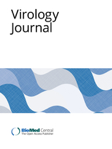
Saleh group has co-authored a journal article in Virology Journal, titled: “Single-walled carbon nanotubes modulate pulmonary immune responses and increase pandemic influenza A virus titers in mice”. This work is led by Dr. Sabo-Attwood’s group at University of Florida. Dipesh Das, a recent graduate of SusNWaTr group, is a coauthor in this article. This article experiments are performed to investigate the role of exposure of single-walled carbon nanotubes (SWCNT) to mice in altering the immune mechanisms and viral titers, following a subsequent influenza A virus infection.
Background: Numerous toxicological studies have focused on injury caused by exposure to single types of nanoparticles, but few have investigated how such exposures impact a host’s immune response to pathogen challenge. Few studies have shown that nanoparticles can alter a hosts response to pathogens (chiefly bacteria) but there is even less knowledge of the impact of such particles on viral infections. In this study, we performed experiments to investigate if exposure of mice to single-walled carbon nanotubes (SWCNT) alters immune mechanisms and viral titers following subsequent influenza A virus (IAV) infection.
Methods: Male C57BL/6 mice were exposed to 20 µg of SWCNT or control vehicle by intratracheal instillation followed by intranasal exposure to 3.2×104 TCID50 IAV or PBS after 3 days. On day 7 mice were euthanized and near-infrared fluorescence (NIRF) imaging was used to track SWCNT in lung tissues. Viral titers, histopathology, and mRNA expression of antiviral and inflammatory genes were measured in lung tissue. Differential cell counts and cytokine levels were quantified in bronchoalveolar lavage fluid (BALF).
Results: Viral titers showed a 63-fold increase in IAV in SWCNT + IAV exposed lungs compared to the IAV only exposure. Quantitation of immune cells in BALF indicated an increase of neutrophils in the IAV group and a mixed profile of lymphocytes and neutrophils in SWCNT + IAV treated mice. NIRF indicated SWCNT remained in the lung throughout the experiment and localized in the junctions of terminal bronchioles, alveolar ducts, and surrounding alveoli. The dual exposure exacerbated pulmonary inflammation and tissue lesions compared to SWCNT or IAV single exposures. IAV exposure increased several cytokine and chemokine levels in BALF, but greater levels of IL-4, IL-12 (P70), IP-10, MIP-1, MIP-1α, MIP-1β, and RANTES were evident in the SWCNT+IAV group. The expression of tlr3, ifnβ1, rantes, ifit2, ifit3, and il8 was induced by IAV alone but several anti-viral targets showed a repressed trend (ifits) with pre-exposure to SWCNT.
Conclusions: These findings reveal a pronounced effect of SWCNT on IAV infection in vivo as evidenced by exacerbated lung injury, increased viral titers and several cytokines/chemokines levels, and reduction of anti-viral gene expression. These results imply that SWCNT can increase susceptibility to respiratory viral infections as a novel mechanism of toxicity.
November 27, 2017 Saleh group has published a journal article in Science of the Total Environment, titled: “Perceived versus actual water quality: Community studies in rural Oaxaca, Mexico”. The lead author in this paper is Lewis Stetson Rowles III.

Saleh group has published a journal article in Science of the Total Environment, titled: “Perceived versus actual water quality: Community studies in rural Oaxaca, Mexico”. The lead author in this paper is Lewis Stetson Rowles III, who is a senior Ph.D. student and an NSF fellow. Stetson is advised by Professors Saleh and Lawler. This article presents water quality and socioeconomic data of three rural communities in Oaxaca, Mexico, a severely understudied region. It is challenging to raise the social curtain and gain access in such culturally diverse communities; thus the presented dataset collected employing a community-based participatory research approach is extremely valuable.
Abstract:Compromised water quality risks public health, which becomes particularly acute in economically marginalized communities. Although the majority of the clean-water-deprived population resides in Sub-Saharan Africa and Asia, a significant portion (32 million) lives in Meso- and Latin-America. Oaxaca is one of the marginalized southern states of Mexico, which has experienced high morbidity from infectious diseases and also has suffered from a high rate of infant mortality. However, there has been a paucity of reports on the status of water quality of rural Oaxaca. This study follows a community-based participatory research approach to address the data gap by reporting on water quality (chemical and microbiological) and by exploring social realities and water use practices within and among communities. Surveys and water quality analyses were conducted on 73 households in three rural communities, which were selected based on the choice of water sources (i.e., river water, groundwater, and spring water). Statistically significant variations among communities were observed including the sanitation infrastructure (p-value 0.001), public perception on water quality (p-value 0.007), and actual microbiological quality of water (p-value 0.001). Results indicate a high prevalence of diarrheal diseases, a desire to improve water quality and reduce the cost of water, and a need for education on water quality and health in all the surveyed communities. The complexities among the three studied communities highlight the need for undertaking appropriate policies and water treatment solutions.
November 6, 2017 Saleh group has published a journal article in ES: Nano, titled: “Harnessing the Power of Microwave for Inactivating Pseudomonas aeruginosa with Nanohybrids”.

Saleh group has published a journal article in ES: Nano, titled: “Harnessing the Power of Microwave for Inactivating Pseudomonas aeruginosa with Nanohybrids”. The lead author in this paper is Jaime Plazas-Tuttle, who has graduated from the SusNWaTr group in May 2017 with a Ph.D. and is currently serving as an Assistant Professor in University of Los Andes, Bogota, Columbia. This creative article presents the first results on utilizing microwave radiation to inactivate Pseudomonas aeruginosa with a novel nanohybrids.
Abstract:Due to the position of microwave (MW) radiation in the electromagnetic spectrum, it has not yet been successfully utilized to inactivate waterborne microorganisms at a reasonable (energy) cost. Exceptional properties at the nano-scale, namely MW absorption-abilities of carbon nanotubes and excellent spectral conversion-capabilities of lanthanide series metal oxides in concert, hold promise to overcome the energetic barrier of this widely used and affordable technology. This study reports synthesis of a nano-heterostructure that combines carbon nanotubes’ and erbium oxides’ properties to generate reactive oxygen species (ROS) and inactivate Pseudomonas aeruginosa. Detailed characterization of the synthesized nanohybrid (NH) material with electron microscopy, X-ray techniques, and thermal gravimetric analysis confirms effective hybridization. At least one log unit of microbial inactivation was achieved via ROS generation with only 20 s of MW irradiation at 110 W (0.0006 kW∙h energy use), using a conventional MW oven. Inactivation studies with ROS scavenger molecules prove that generated oxygen species played the dominant role in bacterial inactivation. These breakthrough results hold promise to enable an unintended use (i.e., disinfection) of MW technology, which is diffused deep into the global societal fabric.
November 6, 2017 Dema El-Masri, a visiting scholar at the SusNWaTr group, has won 2nd place in the poster competition at the 6th Sustainable Nanotechnology Conference, Los Angeles, CA.

Dema El-Masri, a visiting scholar at the SusNWaTr group, has won 2nd place in the poster competition at the 6th Sustainable Nanotechnology Conference, Los Angeles, CA. Dema is a Ph.D. student at Hamad Bin Khalifa University at Doha, Qatar. Her research at SusNWaTr group is jointly funded by CRDF Global and U.S. National Science Foundation and it involves modification of nano clay to remove phosphate from water. Congratulations Dema!
November 3, 2017 SusNWaTr group has received a grant from University of Texas at Austin’s Office of Vice President for Research (VPR). UT’s VPR office has started a new initiative to support creative research grants in the university.

SusNWaTr group has received a grant from University of Texas at Austin’s Office of Vice President for Research (VPR). UT’s VPR office has started a new initiative to support creative research grants in the university and this grant titled: "Harnessing the Power of Microwave to Inactivate Pathogens" is one of the 12 funded this year in the entire university. This study will further Dr. Saleh’s breakthrough research on utilizing microwave radiation for water treatment.
October 24, 2017 Manjula Andukuri, a Texas Exes Forty Acres Scholar and a ChemE sophomore, has been awarded UT’s undergraduate research fellowship sponsored by Texas Undergraduate Studies.

Manjula Andukuri, a Texas Exes Forty Acres Scholar and a ChemE sophomore, has been awarded UT’s undergraduate research fellowship sponsored by Texas Undergraduate Studies. Indu Sabaraya, a 2nd year Ph.D. student, has been closely mentoring Manjula over the past semester. SusNWaTr group congratulates Manjula on her achievement.
October 3, 2017 SusNWaTr group has received funding from U.S. Environmental Protection Agency’s Gulf of Mexico Program titled "Using Problem-Based Learning to Build Water Quality Stewardship with Girl Scouts in the Gulf of Mexico Watershed".

SusNWaTr group has received funding from U.S. Environmental Protection Agency’s Gulf of Mexico Program. The project titled: "Using Problem-Based Learning to Build Water Quality Stewardship with Girl Scouts in the Gulf of Mexico Watershed" is a collaborative effort between Drs. Kirisits and Saleh. This study will engage the girl scouts network in Texas to enhance water quality stewardship at the Gulf of Mexico region.
July 20, 2017 SusNWaTr group has published a book chapter, titled: “Dimensional Variations in Nanohybrids: Property Alterations, Applications, and Considerations for Toxicological Implications”.

SusNWaTr group has published a book chapter, titled: “Dimensional Variations in Nanohybrids: Property Alterations, Applications, and Considerations for Toxicological Implications”. This chapter reviews size/shape/dimensionality variations of nanomaterials due to hybridization and discusses property alteration of these NHs, relevant to applications and nanotoxicology. Former graduate students Nirupam Aich and Jaime Plazas-Tuttle are co-authors in this chapter.
Abstract: Hybridization of nano-scale entities lead to higher dimensional ensemble materials with multifunctionality. Such hierarchical complex materials though are engineered with output properties in mind, these evolved nanostructures possess unique shapes and physico-chemical attributes. Nanotoxicological considerations hinge on physical size and shape factors; thus, dramatic alterations to shape and dimensionality of ensemble nanohybrids (NHs) necessitate careful evaluation of this ‘horizon’ material class. This chapter reviews size/shape/dimensionality variations of nanomaterials due to hybridization and discusses property alteration of these NHs, relevant to applications and nanotoxicology. The chapter also discusses nano-bio interactions of novel nanohybrids in relation to their size, shape, and dimensionality, and outlines future research needs and strategies.
July 7, 2017 Dr. Jaime Plazas-Tuttle, who graduated with a Ph.D. degree from the SusNWaTr group in May 2017, will be joining as an Assistant Professor in the Civil and Environmental Engineering Department at Universidad de los Andes, Bogota, Colombia.

Dr. Jaime Plazas-Tuttle, who graduated with a Ph.D. degree from the SusNWaTr group in May 2017, will be joining as an Assistant Professor in the Civil and Environmental Engineering Department at Universidad de los Andes, Bogota, Colombia. He has carried out breakthrough research to enable microwave radiation for microbial inactivation in water. We wish him success in his future career.
July 1, 2017 Dr. Dipesh Das, who graduated with a Ph.D. degree from the SusNWaTr group in May 2017, will be joining as a research scientist of the nano-fabrication group in Intel Corporation.

Dr. Dipesh Das, who graduated with a Ph.D. degree from the SusNWaTr group in May 2017, will be joining as a research scientist of the nano-fabrication group in Intel Corporation at Portland, OR. Dr. Das has been instrumental in establishing a unique nano-synthesis setup at the SusNWaTr group. We wish him success in his future career.
June 30, 2017 SusNWaTr group has co-authored a journal article in BioTechniques, titled: “Overcoming qRT-PCR interference by select carbon nanotubes in assessments of gene expression”.

SusNWaTr group has co-authored a journal article in BioTechniques, titled: “Overcoming qRT-PCR interference by select carbon nanotubes in assessments of gene expression”. This study develops a novel protocol to overcome interference in qRT-PCR analysis for carbon nanotube induced gene expression.
Abstract: Nanomaterials of various types, including carbon nanotubes (CNTs), can interfere with standard quantitative real-time polymerase chain reaction (qRT-PCR) assays resulting in inaccurate gene expression. Although such observations have been noted, the precise step in the qRT-PCR pipeline where interference occurs has not been well described. Here we investigated where in the process surface-oxidized multi-walled carbon nanotubes (oxMWNTs) inhibited the expression of the housekeeping gene, GAPDH, and explored several strategies to minimize such inhibition. We determined that the interference occurred during the reverse transcription (RT) step and found that doubling reaction reagents or adding bovine serum albumin (BSA) successfully mitigated the inhibition. Finally, we show that assay interference was observed for CNTs that were surface-oxidized but pristine CNTs did not cause the same level of interference. These results highlight the importance of monitoring qRT-PCR assays for interference by CNTs that differ by surface chemistry, as these nanomaterials are commonly used in gene expression assessments at concentrations that we have shown to be inhibitory.
May 23, 2017 Dr. A. R. M. Nabiul Afrooz, a graduate from SusNWaTr in May 2015, recently left his postdoctoral scholar position at Stanford University to join as a research scientist in Southern California Coastal Water Research Project, Coasta Mesa, CA.

Dr. A. R. M. Nabiul Afrooz, who graduated with a Ph.D. degree from the SusNWaTr group on May 2015, recently left his postdoctoral scholar position at Stanford University to join as a research scientist in Southern California Coastal Water Research Project, Coasta Mesa, CA. Dr. Afrooz worked on fate and transport of rod-shaped nanomaterials during his tenure at UT Austin. We wish him success in his future career.
May 21, 2017 Five graduate students have graduated from SusNWaTr group this Spring. Dr. Jaime Plazas-Tuttle and Dr. Dipesh Das have done novel research on nano-enabled disinfection technology development and on emerging nanohybrids, respectively. Three students, Christine Ngan, Anna Merryman, and Allison Hornstra, have also graduated with M.S. degrees this Spring.

Five graduate students have graduated from SusNWaTr group this Spring. Dr. Jaime Plazas-Tuttle and Dr. Dipesh Das have done novel research on nano-enabled disinfection technology development and on emerging nanohybrids, respectively. Three students, Christine Ngan, Anna Merryman, and Allison Hornstra, have also graduated with M.S. degrees this Spring.
March 24, 2017 Saleh group has co-authored a journal article in NanoImpact, titled: “Importance and challenges of environmental ligand binding and exchange: Introducing single molecule imaging as a model characterization technique”, led by Markita Landry’s group at UC Berkeley.

Saleh group has co-authored a journal article in NanoImpact, titled: “Importance and challenges of environmental ligand binding and exchange: Introducing single molecule imaging as a model characterization technique”, led by Markita Landry’s group at UC Berkeley. This is one of the first studies that presents single-molecule imaging as a novel tool to assess soft corona morphology on carbon nanotube surfaces.
Abstract: Highly surface active nano-scale materials, when released into the natural environment, tend to adsorb geo- and biomacromolecules and end up presenting a modified interface to biological species. Capped nanocrystals and polymer/surfactant modified nanomaterials also are known to undergo ligand exchange when exposed to natural systems. Thus, nano-bio interactions will primarily be governed by the adsorbed or exchanged natural macromolecules. To-date there has been no established technique determining the kinetics of ligand exchange or characterizing the bound geobiomacromolecular corona in an environmental setting. Single-molecule imaging utilizing near-infra red spectrometry, and single-molecule imaging of fluorophore-tagged polymeric ligands can enable detailed characterization of biopolymeric corona. This perspective aims to highlight the importance of ligand exchange, identify roles of surface ligands on nano-bio interaction, and present initial evidence of macromolecular characterization on nanotube surfaces using single-molecule techniques. This commentary also aims to outline the challenges facing nano-environmental health and safety community on assessing biological interaction with complex nano-scale heterostructures in a realistic environmental matrix.
January 18, 2017 Dr. Saleh has co-authored a journal article in Langmuir, titled: “Sulfate Mediated End-to-End Assembly of Gold Nanorods”. The research, led by Dr. Vikesland, shows end-to-end assembly of gold nanorods by adjusting the sulfate counterions.

Dr. Saleh has co-authored a journal article in Langmuir, titled: “Sulfate Mediated End-to-End Assembly of Gold Nanorods”, led by Peter Vikesland’s group at Virginia Tech. This is one of the first studies that shows end-to-end assembly of gold nanorods by merely adjusting the sulfate counterions. Dr. Saleh has had a significant contribution in conceptualization and analysis of this novel work.
Abstract: There is interest in the controlled aggregation of gold nanorods (GNRs) for the production of extended nanoassemblies. Prior studies have relied upon chemical modification of the GNR surface to achieve a desired final aggregate structure. Herein, we illustrate that control of electrolyte composition can facilitate end-to-end assembly of cetyltrimethylammonium bromide (CTAB) coated GNRs. By adjusting either the sulfate anion concentration or the exposure time it is possible to connect GNRs in chain-like assemblies. In contrast, end-to-end assembly was not observed in control experiments using monovalent chloride salts. We attribute the end-to-end assembly to the localized association of sulfate with exposed quaternary ammonium head groups of CTAB at the nanorod tip. To quantify the assembly kinetics, visible-near infrared extinction spectra were collected over a pre-determined time period and the colloidal behavior of the GNR suspensions was interpreted using plasmon band analysis. Transmission electron microscopy and atomic force microscopy results support the conclusions reached via plasmon band analysis and the colloidal behavior is consistent with Derjaguin-Landau-Verwey-Overbeek (DLVO) theory.
December 29, 2016 SusNWaTr group has co-authored a journal article in Environ Sci Technol, titled: “Influence of the gastrointestinal environment on the bioavailability of ethinyl estradiol sorbed to single-walled carbon nanotubes”, led by Sabo-Attwood group at University of Florida.

SusNWaTr group has co-authored a journal article in Environ Sci Technol, titled: “Influence of the gastrointestinal environment on the bioavailability of ethinyl estradiol sorbed to single-walled carbon nanotubes”, led by Sabo-Attwood group at University of Florida. This is one of the first studies that systematically evaluates bioavailability of an endocrine disrupting compound (ethinyl estradiol), facilitated by single-walled carbon nanotubes. Senior Ph.D. students Dipesh Das and Jaime Plazas-Tuttle are co-authors in this paper as well.
Abstract: Recent evidence suggests that if single-walled carbon nanotubes (SWCNTs) make their way into aquatic environments, they may reduce the toxicity of other waterborne contaminants due to their sorptive nature. However, few studies have examined whether contaminants remain adsorbed following ingestion by aquatic organisms. The objective of this study was to examine the bioavailability and bioactivity of ethinyl estradiol (EE2) sorbed onto SWCNTs in a fish gastrointestinal (GI) tract. Sorption experiments indicated that SWCNTs effectively adsorbed EE2, but, the chemical was still able to bind and activate soluble estrogen receptors (ER) in vitro. However, centrifugation to remove SWCNTs and adsorbed EE2 significantly reduced ER activity compared to EE2 alone. Additionally, the presence of SWCNTs did not reduce the EE2 driven induction of vitellogenin 1 in vivo compared to organisms exposed to EE2 alone. These results suggest that while SWCNTs adsorb EE2 from aqueous solutions, under biological conditions EE2 can desorb and retain bioactivity. Additional results indicate that interactions with gastrointestinal proteins may decrease estrogen adsorption to SWCNTs by 5%. The current study presents valuable data to elucidate how SWCNTs interact with chemicals that are already present in our aquatic environments which is essential for determining their potential health risk.
November 02, 2016 Erica Mason, a ChemE sophomore working in SusNWaTr group has received Fall 2016 Undergraduate Research Fellowship.

Erica Mason, a ChemE sophomore working in SusNWaTr group has received Fall 2016 Undergraduate Research Fellowship. Erica has been working on an exciting water treatment project with functional nanohybrids. Congratulations Erica!
October 14, 2016 SusNWaTr group has published a journal article in ES:Nano, titled: "An Elegant Method for Large Scale Synthesis of Metal Oxide-Carbon Nanotube Nanohybrids for Nano-environmental Application and Implication Studies".

SusNWaTr group has published a journal article in ES:Nano, titled: "An Elegant Method for Large Scale Synthesis of Metal Oxide-Carbon Nanotube Nanohybrids for Nano-environmental Application and Implication Studies". This study presents a facile method for synthesis of carbonaceous-metal oxide nanohybrids. Dipesh Das, a 4th year Ph.D. student is the lead author of this paper. Senior Ph.D. student Jaime Plazas-Tuttle, 2nd year Ph.D. student Indu V, Sabaraya, and an undergraduate student Sneha Jain are co-authors in this paper. Dr. Sabo-Attwood of University of Florida has also co-authored this article with Dr. Saleh; this is Dr. Saleh's career's 51st peer reviewed journal article.
Abstract: Nanohybrids (NHs) with synergistic and emergent properties are used as electrocatalysts, photocatalysts, and antimicrobial agents in numerous applications. Carbon nanotube (CNT)-metal oxide NHs are one of the most commercialized heterostructures because of their advantages as catalyst supports in the fuel cell industry. To-date, there has been little understanding of their environmental behavior, primarily due to the lack of a robust yet facile synthesis technique. This study presents an elegant synthesis method, which varies reagent composition and ratio to grow metal oxides of choice onto multiwalled carbon nanotube (MWNT) surfaces. This technique can synthesize heterostructures with elements ranging from transition (Ti and Zn) to lanthanide series (Er and Pr) metals. This modified sol-gel method can provide large material yield (100s of mg) with high degree of overall homogeneity between synthesized batches. Such a method for preparing complex NHs from component materials can be extremely useful to perform systematic environmental analyses.
September 22, 2016 Dr. Saleh will be publishing the first textbook on environmental implications of nanotechnology with John Wiley & Sons Inc. Professor Vicki Grassian, chief editor of ES:Nano is the co-author with Dr. Saleh in this book.
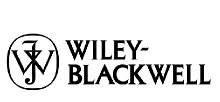
Dr. Saleh will be publishing the first textbook on environmental implications of nanotechnology with John Wiley & Sons Inc. Professor Vicki Grassian, chief editor of ES:Nano is the co-author with Dr. Saleh in this book. The goal of this text is to build and enhance student knowledge on a wide range of topics: synthesis, crystal structure, chemical and electronic (band gap) properties, surface properties (surface tension, surface pressure, adsorption of surfactants/polymers, etc.), environmental or occupational health implications (aggregation, deposition, transformation, toxicity), exposure and risk. It will also include discussions on nanotoxicity and risk assessment. The book is expected to be published by 2019.
September 22, 2016 Craig Ayres have joined SusNWaTr group. Craig has earned a B.S. degree in Civil and Environmental Engineering from Ohio State University.

Craig Ayres have joined SusNWaTr group. Craig has earned a B.S. degree in Civil and Environmental Engineering from Ohio State University. Craig has also worked at AECOM as a water/wastewater engineer prior to joining as a graduate student at UT Austin. He brings in expertise in nanomaterial characterization, fate and transport research, and treatment plant design and operational knowhow. SusNWaTr group welcomes Craig and wishes him the best in his graduate education.
September 15, 2016 Dr. Saleh has been selected as one of the top 10 reviewers for Environmental Science: Nano.

Dr. Saleh has been selected as one of the top 10 reviewers for Environmental Science: Nano. The top reviewers are selected by the editor for their significant contribution to the journal in 2016. In celebration of 'Peer Review Week', RSC will be publishing the names of the top 10 reviewers on their blog during the week of the 19th September, to recognize the reviewers.
August 31, 2016 SusNWaTr group has published a book chapter, titled: "Aggregation Kinetics and Fractal Dimension of Nanomaterials in Environmental Systems".
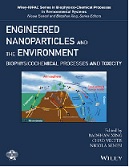
SusNWaTr group has published a book chapter, titled: "Aggregation Kinetics and Fractal Dimension of Nanomaterials in Environmental Systems". This chapter discusses aggregation processes of nanomaterials in the environment. Former graduate students A. R.M. Nabiul Afrooz and Nirupam Aich and current senior graduate student Jaime Plazas-Tuttle are co-authors in this chapter. The book will be formally published by John Wiley and Sons, Inc. by October of 2016.
Abstract: Understanding aggregation behavior of engineered nanomaterials (ENM) is key to predict their fate in aquatic environment and evaluate their interaction with biological entities. Although Derjaguin-Landau-Verwey-Overbeak (DLVO) colloidal theory provides the basic framework of nanoparticle aggregation process, unique surface properties of ENMs, i.e., functionality, surface heterogeneity, size, shape, atomic structure, etc. and extrinsic environmental conditions, i.e., pH, ionic strength, natural organic matter (NOM), and other particulate entities, complicate the mechanistic understanding of their aggregation kinetics. Moreover, non-DLVO type interactions, i.e., hydrophobic, magnetic, and interaction from emergent ENM properties present further challenges in evaluation of their aggregation behavior. Uncertainty in ENM aggregation not only makes their fate and transport determination difficult but also convolutes mechanistic understanding of nanotoxicity. This chapter discusses theoretical development and experimental techniques of ENM aggregation, reviews state-of-the-art aggregation literature, identifies key challenges, and proposes potential future research strategies to address these complexities.apeutics.
July 08, 2016 Jaime Plazas-Tuttle, a final year PhD student in the SusNWaTr group, has been awarded the "Kolodzey Travel Grant" from the CAEE department at UT.

Jaime Plazas-Tuttle, a final year PhD student in the SusNWaTr group, has been awarded the "Kolodzey Travel Grant" from the CAEE department at UT. He will be presenting her research in the upcoming American Chemical Society National Meeting and Exposition, Philadelphia, PA. Jaime's presentation title is "The Power of Novel Metal Oxide-Carbon Nanotube Heterostructures: Enabling Microwave to Disinfect Water for Aquaculture".
Abstract: Over the past half a century, global food consumption has increased significantly, rising by nearly 400 kcal/person/day. Such growth has put tremendous stress on the food chain and access to high calorie diet should be at the forefront in ensuring global food security. Fishes (global aquaculture production of 50M metric tons of $100B per annum value) are effective protein sources for humans with the highest edible yield (~70% of the body mass utilized) and protein retention (31%) compared red meat (18%). Since water is the life-blood of aquaculture industry, ensuring suitable water quality is essential to the success of this industry. The Norwegian virus attack of 1984 as well as recent reports from FAO demonstrated the ability of pathogens to have severe consequences on aquaculture production. The current best practices in aquaculture involve ultraviolent (UV) disinfection to ensure biological quality of water. UV radiation is mutagenic to pathogens by breaking molecular bonds within micro-organismal DNA and producing thymine dimers. While this technique is largely successfully it suffers from three key limitations: (i) efficiency drops precipitously in turbid water; (ii) required irradiation time can be prolonged to inactivate certain pathogens, rendering this technology to be cost-prohibitive; and (iii) some pathogens are resistant to UV irradiation, e.g., viruses. Since chemical disinfection is not an option for aquaculture (due to the bioaccumulation risks of carcinogenic disinfection byproducts and other chemicals) development of a more effective irradiation-based technology is desired. This study presents a novel nano-enabled disinfection system, which utilizes low intensity energy waves, i.e., microwaves (MWs), to effectively disinfect water. Metal oxide-carbon nanotube heterostructures have shown to establish a synergy between adsorptive ability of microwave with the upconverting ability of the metal oxides to successfully generate reactive oxygen species and disinfect water. The synthesized heterostructures have inactivated pseudomonas aeruginosa, when irradiated with MW for 10 s. F. columnare inactivation is currently being studied under water quality composition, relevant to aquaculture.
June 18, 2016 SusNWaTr group has published a journal article in Sci Tot Environ, titled: "Importance of Doping, Dopant Distribution, and Nano-Scale Defects on Electronic Band Structure Alteration of Metal Oxide Nanoparticles: Implications for Reactive Oxygen Species Generation".

SusNWaTr group has published a journal article in Sci Tot Environ, titled: "Importance of Doping, Dopant Distribution, and Nano-Scale Defects on Electronic Band Structure Alteration of Metal Oxide Nanoparticles: Implications for Reactive Oxygen Species Generation". This perspective discusses the role of dopants and defects on metal oxide nanoparticles' ability to generate ROS and introduce toxicity.
May 19, 2016 SusNWaTr group has has received funding from the National Science Foundation (NSF). The project titled: "Collaborative Research: EAGER: Interaction of Carbon-Metal Nanohybrids at Environmental Interfaces" is a collaborative effort between Drs. Saleh and Sabo-Attwood (University of Florida).

SusNWaTr group has has received funding from the National Science Foundation (NSF). The project titled: "Collaborative Research: EAGER: Interaction of Carbon-Metal Nanohybrids at Environmental Interfaces" is a collaborative effort between Drs. Saleh and Sabo-Attwood (University of Florida). This study will synthesize and complex nanohybrids and assess the role of metal crystals on nano-EHS behavior of carbon nanotube-metal oxide nanohybrids.
April 20, 2016 Erica Mason, a ChemE sophomore has won 1st place in Women in Engineering poster competition and 3rd place at the annual Poster Exhibition on Engineering Research (PEER) contest at Cockrell School of Engineering.

Erica Mason, a ChemE sophomore has won 1st place in Women in Engineering poster competition and 3rd place at the annual Poster Exhibition on Engineering Research (PEER) contest at Cockrell School of Engineering. Erica has been recognized at the Cockrell Distinguished Awards Banquet on April 20th. Indu V. Sabaraya has been closely mentoring Erica for the past semester. SusNWaTr group congratulates Erica on her achievement.
March 01, 2016 SusNWaTr group has published a journal article in Water Res, titled: "Co-transport of gold nanospheres with single-walled carbon nanotubes in saturated porous media".
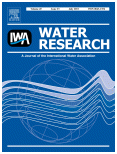
SusNWaTr group has published a journal article in Water Res, titled: "Co-transport of gold nanospheres with single-walled carbon nanotubes in saturated porous media".This study systematically assesses the transport of gold nanospheres in presence of a secondary particulate single-walled carbon nanotube. State-of-the-art characterization and saturated packed-bed column studies have been utilized to decipher underlying filtration mechanisms. Dr. A. R. M. Nabiul Afrooz, currently serving as postdoctoral scholar at the Civil and Environmental Engineering department of Stanford University, is the lead author of this paper. Senior Ph.D. student Dipesh Das is a co-author in this paper.
Abstract:Engineered nanomaterial (ENM) transport through porous media is typically assessed in a controlled single-particulate environment. Presence of a secondary particle (either natural or engineered) in the natural environment though likely, is rarely taken into consideration in assessing their transport behavior. This study systematically assesses the role of a secondary ENM (i.e., pluronic acid modified single-walled carbon nanotubes, PA-SWNTs) on a primary particle (i.e., gold nanospheres, AuNSs) transport through saturated porous media under a wide range of aquatic conditions (1-100 mM NaCl). AuNS hetero-dispersions (i.e., with PA-SWNTs) are transported through saturated sand columns and the transport behavior is compared to AuNS-only homo-dispersion cases, which display classical ionic strength-dependent behavior. AuNS hetero-dispersion, however, is highly mobile with little to no ionic strength-dependent effects. This study also assesses the role of pre-coating of the collectors with PA-SWNTs on AuNSs' mobility thus assesses the role of order of introduction of the secondary particles. Pre-existence of the secondary particles in the porous media shows enhanced filtration of primary AuNSs. However, presence of natural organic matter (NOM) slightly increases AuNS mobility through PA-SWNT coated sand at 10 mM ionic strength. The study results demonstrate that the presence and order of addition of the secondary particles strongly influence primary particles' mobility. Thus ENMs can demonstrate facilitated transport or enhanced removal, depending on the presence of the secondary particulate matter and background solution chemistry.
February 29, 2016 SusNWaTr group has published a journal article in Environ Sci Technol, titled: "Aggregation Kinetics of Higher Order Fullerene Clusters in Aquatic Systems".

SusNWaTr group has published a journal article in Environ Sci Technol, titled: "Aggregation Kinetics of Higher Order Fullerene Clusters in Aquatic Systems".This is one of the first studies to systematically assesses aggregation behavior of higher order fullerene (HOF) clusters in aqueous environment. State-of-the-art characterization, dynamic light scattering, and ab initio calculations have been utilized to decipher underlying aggregation mechanisms. Dr. Nirupam Aich, currently serving as Assistant Professor at the Civil and Environmental Engineering department of SUNY Buffalo is the lead author of this paper. Senior Ph.D. student Dipesh Das and first year Ph.D. student Indu Venu Sabaraya are co-authors of this paper.
Abstract:Aggregation kinetics of nC60 and higher order fullerene (HOFs) clusters, i.e., nC70, nC76, and nC84, was systematically studied under a wide range of mono- (NaCl) and di-valent (CaCl2) electrolytes, and using time-resolved dynamic light scattering. Suwanee River Humic Acid (SRHA) was also used to determine the effect of natural macromolecule on nHOF aggregation. Increase in electrolyte concentration resulted in electrical double layer compression of the negatively charged fullerene clusters, and the nC60s and nHOFs alike displayed classical Derjaguin-Landau-Verwey-Overbeek (DLVO) type interaction. The critical coagulation concentration (CCC) displayed a strong negative correlation with the carbon number in fullerenes, and was estimated as 220, 150, 100, and 70 mM NaCl, and 10, 12, 6, and 7.5 mM CaCl2 for nC60, nC70, nC76, and nC84, respectively. The aggregation mechanism, i.e., van der Waals interaction domination, was enumerated via molecular dynamics simulation and modified DLVO model. The presence of SRHA (2.5 mg TOC/L) profoundly influenced the aggregation behavior by stabilizing all fullerene clusters, even at 100 mM NaCl concentration. The results from this study can be utilized to predict aggregation kinetics of nHOF clusters other than the ones studied here. The scaling factor for van der Waals interaction can also be used to model nHOF cluster interaction.
November 19, 2015 Nirupam Aich has successfully defended his Ph.D. dissertation titled "Environmental Implications of Higher Order Fullerenes and Conjugated Nanostructures".

Nirupam Aich has successfully defended his Ph.D. dissertation titled "Environmental Implications of Higher Order Fullerenes and Conjugated Nanostructures". SusNWaTr group congratulates Dr. Nirupam Aich! Dr. Aich will be joining as a tenure-track Assistant Professor to the Department of Civil and Environmental Engineering, State University of New York, Buffalo.
November 09, 2015 Dr. Saleh has been awarded the Emerging Investigator Award of 2015, jointly sponsored by the Royal Society of Chemistry and Sustainable Nanotechnology Organization.

Dr. Saleh has been awarded the Emerging Investigator Award of 2015, jointly sponsored by the Royal Society of Chemistry and Sustainable Nanotechnology Organization. The award was handed our at the Sustainable Nanotechnology Organization banquet dinner at the Benson Hotel, Portland, OR. The award was handed out at the Sustainable Nanotechnology Organization banquet dinner at the Benson Hotel, Portland, OR. SusNWaTr group is thankful to RSC and SNO.
See Event Picture
September 05, 2015 SusNWaTr group has published a journal article at Environ Sci: Nano, titled: "Defining Fundamental Science Needs: No Easy Feat when the Simple itself is Complex".

SusNWaTr group has published a journal article at Environ Sci: Nano, titled: "Defining Fundamental Science Needs: No Easy Feat when the Simple itself is Complex". This article is a in collaboration with multiple institutions. This paper discusses fundamental science needs of nanomaterial EHS.
Abstract:Nanotechnology is no longer in its infancy and has made significant advances since the implementation of the National Nanotechnology Initiative (NNI) in 2000. Incorporation of nanotechnology in many fields including information technology, medicine, materials, energy, catalysis and cosmetics has led to an increase in engineered nanomaterial (ENM) production, and consequently, increased nanomaterial use. In comparison, the generation of concrete and consistent evidence related to the environmental health and safety of nanomaterials (NanoEHS) is lacking. The main factors contributing to the slower progress in NanoEHS versus conventional EHS are related to the complexity, property transformations, life cycles and behavior of nanomaterials even in carefully controlled environments. Therefore, new systematic, integrated research approaches in NanoEHS are needed for overcoming this complexity and bridging current knowledge gaps. A workshop on "NanoEHS: Fundamental Science Needs" brought together scientists and engineers to identify current fundamental science challenges and opportunities within NanoEHS. Detailed discussions were conducted on identifying the fundamental properties that are critical in NanoEHS, differentiating between conventional and NanoEHS studies, the effect of dynamic transformations on nanometrology, role of dosimetry and mechanistic data gaps in nanotoxicology. An important realization that even simple nanoscale materials can be complex when considering NanoEHS implications was noted several times during the workshop. Despite this fact, a number of fundamental research areas to further the scientific foundation to address NanoEHS needs are suggested.
September 04, 2015 Final year PhD student, Nirupam Aich will be joining as an Assistant Professor in the Civil, Structural and Environmental Engineering Department of State University of New York at Buffalo, upon completion of his PhD dissertation from UT Austin.

Final year PhD student, Nirupam Aich will be joining as an Assistant Professor in the Civil, Structural and Environmental Engineering Department of State University of New York at Buffalo, upon completion of his PhD dissertation from UT Austin. He has been one of the lead researchers at SusNWaTr group, publishing seven peer reviewed journal articles as the primary author (1st/2nd) and six other as co-author in high impact journals (Environ Sci Technol, Nanotechnol, ES Nano, Environ Chem, etc.). We wish him success in his future career.
September 04, 2015 SusNWaTr group has received funding from Texas Hazardous Waste Research Center (THWRC).

SusNWaTr group has received funding from Texas Hazardous Waste Research Center (THWRC). The project titled: " Development of nanomaterial use, transport, and disposal guidelines for laboratories at the UT Austin and other THWRC consortium universities" is a collaborative effort between Drs. Saleh and Kirisits at UT Austin. This study will develop a detailed, NM-specific EHS guidelines document and safety-training module with the support of the UT-Austin EHS office.
August 31, 2015 Navajo Times, the weekly newspaper distributed throughout the Navajo reservation has recently published a story on Dr. Saleh and 2nd year graduate student Stetson Rowles III's research on nanomaterial-enhanced pottery.

Navajo Times, the weekly newspaper distributed throughout the Navajo reservation has recently published a story on Dr. Saleh and 2nd year graduate student Stetson Rowles III's research on nanomaterial-enhanced pottery. SusNWaTr group is developing an effective disinfection technology for the Navajo communities, where fundamental material science is integrated with the Navajo 'lifestyle knowledge' of pottery in achieving social embeddedness for the technology. This research has also been profiled in 'Alcade', the magazine of the Texas Exes.Alcade Magazine Link
July 22, 2015 Dipesh Das, a third year PhD student of the SusNWaTr group, has been awarded the "Kolodzey Travel Grant" from the CAEE department and the "Professional Development Award" from UT Graduate School.

Dipesh Das, a third year PhD student of the SusNWaTr group, has been awarded the "Kolodzey Travel Grant" from the CAEE department and the "Professional Development Award" from UT Graduate School. He will be presenting his research in the upcoming 250th American Chemical Society National Meeting and Exposition, Boston, MA. Dipesh will be presenting two research projects in the conference. The titles of his presentations are- "Effect of Synthesis Chemistry on Aggregation Kinetics of CNT-Metal and CNT-Metal Oxide Nanohybrids in Environmentally Relevant Conditions" and "Co-transport of Virus Like Nanoparticles with Single-walled Carbon Nanotubes in Saturated Porous Media"
June 09, 2015 SusNWaTr group has received funding from the National Science Foundation (NSF). The project titled: "UNS: Role of dopant concentration and distribution in the environmental behavior of indium tin oxide nanoparticles"

SusNWaTr group has received funding from the National Science Foundation (NSF). The project titled: "UNS: Role of dopant concentration and distribution in the environmental behavior of indium tin oxide nanoparticles" is a collaborative effort between Drs. Saleh, Kirisits, Milliron and Katz at UT Austin. This study will systematically assess the role of crystal defects and dopants on nano-EHS of indium tin oxide. The defects and dopants will be atomistically controlled.
June 03, 2015 SusNWaTr group has co-authored a journal article in a special issue (edited by Dr. Robert Tanguay) at Nanomaterials, titled: "Dynamism of Stimuli-Responsive Nanohybrids: Environmental Implications".

SusNWaTr group has co-authored a journal article in a special issue (edited by Dr. Robert Tanguay) at Nanomaterials, titled: "Dynamism of Stimuli-Responsive Nanohybrids: Environmental Implications" Jaime Plazas-Tuttle, a third year PhD student, is the lead author of this article. This paper introduces novel adaptive nanohybrids and discusses the dynamism of this new class of materials during environmental interaction.
Abstract: Nanomaterial science and design have shifted from generating single passive nanoparticles to more complex and adaptive multi-component nanohybrids. These adaptive nanohybrids (ANHs) are designed to simultaneously perform multiple functions, while actively responding to the surrounding environment. ANHs are engineered for use as drug delivery carriers, in tissue-engineered templates and scaffolds, adaptive clothing, smart surface coatings, electrical switches, and in platforms for diversified functional applications. Such ANHs are composed of carbonaceous, metallic, or polymeric materials with stimuli-responsive soft-layer coatings that enable them to perform such switchable functions. Since ANHs are engineered to dynamically transform under different exposure environments, evaluating their environmental behavior will likely require new approaches. Literature on polymer science has established a knowledge core on stimuli-responsive materials. However, translation of such knowledge to environmental health and safety (EHS) of these ANHs are not yet realized. It is critical to investigate and categorize the potential hazards of ANHs because exposure in an unintended or shifting environment could present uncertainty in EHS. This article presents a perspective on EHS evaluation of ANHs, proposes a principle to facilitate their identification for environmental evaluation, outlines a stimuli-based classification for ANHs, and discusses emerging properties and dynamic aspects for systematic EHS evaluation.
June 03, 2015 SusNWaTr group has published a journal article in a special issue (edited by Dr. Boris Lau) at Frontiers of Microbiogy, titled: "Mechanistic Lessons Learned from Antimicrobial Studies of Metallic Nanomaterials: Implications for Nano-Biofilm Interaction".

SusNWaTr group has published a journal article in a special issue (edited by Dr. Boris Lau) at Frontiers of Microbiogy, titled: "Mechanistic Lessons Learned from Antimicrobial Studies of Metallic Nanomaterials: Implications for Nano-Biofilm Interaction".This article is a perspective written jointly by Saleh Group and Kirisits Group at UT's EWRE program. This paper discusses unique mechanisms of nanoparticle interaction with attached microbiological systems.
Abstract: Metal and metal oxide nanoparticles (NPs) are used in numerous applications and have high likelihood of entering engineered and natural environmental systems. Careful assessment of the interaction of these NPs with bacteria, particularly biofilm bacteria, is necessary. This perspective discusses mechanisms of NP interaction with bacteria and identifies challenges in understanding NP-biofilm interaction, considering fundamental material attributes and inherent complexities of biofilm structure. The current literature is reviewed, both for planktonic bacteria and biofilms; future challenges and complexities are identified, both in light of the literature and a dataset on the toxicity of silver NPs toward planktonic and biofilm bacteria. This perspective aims to highlight the complexities in such studies and emphasizes the needs for systematic evaluation of NP-biofilm interaction.
June 03, 2015 SusNWaTr group has co-authored a journal article in a special issue (edited by Dr. Robert Tanguay) at Nanomaterials, titled: "Examination of single-walled carbon nanotubes uptake and toxicity from dietary exposure: Tracking movement and impacts in the gastrointestinal system".

SusNWaTr group has co-authored a journal article in a special issue (edited by Dr. Robert Tanguay) at Nanomaterials, titled: "Examination of single-walled carbon nanotubes uptake and toxicity from dietary exposure: Tracking movement and impacts in the gastrointestinal system".This article resulted from the collaborative research of Sabo-Attwood (University of Florida) and Saleh groups. The paper presents novel experimental results on nutrient sorption to single-walled carbon nanotubes via analysis of gene expressions and studying histology of fathead minnows (Pimephales promelas ), and performing detailed physiochemical characterization of the materials.
Abstract: Previous studies indicate that exposure of fish to pristine single-walled carbon nanotubes (SWCNTs) by oral gavage causes no overt toxicity and no appreciable absorption has been observed. However, in the environment, SWCNTs are likely to be present in dietary sources, which may result in differential impacts on uptake and biological effects. Additionally, the potential of these materials to sorb nutrients (proteins, carbohydrates, and lipids) while present in the gastrointestinal (GI) tract may lead to nutrient depletion conditions that impact processes such as growth and reproduction. To test this phenomenon, fathead minnows were fed a commercial diet either with or without SWCNTs for 96 hours. Tracking and quantification of SWCNTs using near-infrared fluorescence (NIRF) imaging during feeding studies showed the presence of food does not facilitate transport of SWCNTs across the intestinal epithelia. Targeting genes shown to be responsive to nutrient depletion (peptide transporters, peptide hormones, and lipases) indicated that pept2 , a peptide transporter, and cck , a peptide hormone, showed differential mRNA expression by 96 hours, a response that may be indicative of nutrient limitation. The results of the current study increase our understanding of the movement of SWCNTs through the GI tract, while the changes in nutrient processing genes highlight a novel mechanism of sublethal toxicity in aquatic organisms.
April 14, 2015 Dr. A.R.M. Nabiul Afrooz has successfully defended his doctoral dissertation titled: "Aggregation and Deposition of Gold Nanoparticles (AuNP) in Singular and Binary Systems: Role of Size, Shape, and Environmental Characteristics".

Dr. A.R.M. Nabiul Afrooz has successfully defended his doctoral dissertation titled: "Aggregation and Deposition of Gold Nanoparticles (AuNP) in Singular and Binary Systems: Role of Size, Shape, and Environmental Characteristics". Dr. Afrooz has already published 16 journal articles and 2 book chapters with 2 more journal articles under review. He will be joining as a post-doctoral scholar in Professor Alexandria Boehm's research group at Stanford University. Congratulations Dr. Afrooz!
See Event PictureMarch 13, 2015 Dr. Saleh will be presenting an invited lecture to the Department of Environmental and Global Health at University of Florida on March 13, 2015 at 9:00 am (Emerging Pathogens Institute, Room 150).

Dr. Saleh will be presenting an invited lecture to the Department of Environmental and Global Health at University of Florida on March 13, 2015 at 9:00 am (Emerging Pathogens Institute, Room 150). His Talk is titled: "Environmental behavior of nanomaterials: Implications of material and environmental complexities". SusNWaTr Group thanks the gracious host, Dr. Tara Sabo-Attwood.
February 23, 2015 Final year PhD student, A.R.M. Nabiul Afrooz will be joining Professor Alexandria Boehm's research group at Stanford University, upon completion of his PhD dissertation from UT Austin.

Final year PhD student, A.R.M. Nabiul Afrooz will be joining Professor Alexandria Boehm's research group at Stanford University, upon completion of his PhD dissertation from UT Austin. He has been one of the lead researchers at SusNWaTr group, publishing six primary authored (1st/2nd) and ten other co-authored peer reviewed articles in high impact journals (Environ Sci Technol, Chemosphere, J Nanopart Res, etc.). We wish him success in his future career.
February 03, 2015 SusNWaTr group's recently accepted paper in ES Nano, titled: "Research Strategy to Determine When Novel Nanohybrids Pose Unique Environmental Risks", has been featured in the journal's cover; Issue 1, Volume 2, pp 11-18.
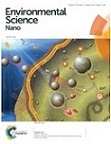
SusNWaTr Group has published a journal article in Environ Chem, titled: "Research Strategy to Determine When Novel Nanohybrids Pose Unique Environmental Risks", has been featured in the journal's cover; Issue 1, Volume 2, pp 11-18.
Abstract: The production and use of increasingly complex hierarchical multifunctional ensembles of nanomaterials introduces emergent properties that will likely lead to uncertainty in the environmental health and safety (EHS) evaluation of nanohybrids (NHs). This perspective proposes principles to identify NHs with novel properties relevant to nano EHS research, and discusses specific challenges for EHS research on these materials. We propose a strategy for focusing nano EHS research efforts on relevant NH systems.
January 19, 2015 SusNWaTr Group has published a journal article in Environ Chem, titled: "Change in Chirality of Semiconducting Single-Walled Carbon Nanotubes Can Overcome Anionic Surfactant Stabilization: A Systematic Study of Aggregation Kinetics".
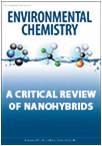
SusNWaTr Group has published a journal article in Environ Chem, titled: "Change in Chirality of Semiconducting Single-Walled Carbon Nanotubes Can Overcome Anionic Surfactant Stabilization: A Systematic Study of Aggregation Kinetics". The article assesses the interplay between anionic surfactant structure and chirality of single-walled carbon nanotubes on their aggregation behavior. Time-resolved state-of-the-art characterization, dynamic light scattering, and ab initio calculations have been utilized to decipher underlying aggregation mechanisms.
Abstract: Single-walled carbon nanotubes' (SWNT) effectiveness in applications is enhanced by debundling or stabilization. Anionic surfactants are known to effectively stabilize SWNTs. However, the role of specific chirality on surfactant-stabilized SWNT aggregation has not been studied to date. The aggregation behavior of chirally enriched (6,5) and (7,6) semiconducting SWNTs, functionalized with three anionic surfactants-sodium dodecyl sulfate (SDS), sodium dodecyl benzene sulfonate (SDBS), and sodium deoxycholate (SDOCO)-was evaluated with time-resolved dynamic light scattering. A wide range of mono- (NaCl) and di-valent (CaCl2) electrolytes as well as a 2.5 mg TOC/L Suwannee River humic acid (SRHA) were used as background chemistry. Overall, SDBS showed the most effectiveness in SWNT stability, followed by SDOCO and SDS. However, the relatively larger diameter (7,6) chiral tubes compromised the surfactant stability, compared to (6,5) chiral enrichment, due to enhanced van der Waals interaction. The presence of di-valent electrolytes overshadowed the chirality effects and resulted in similar aggregation behavior for both the SWNT samples. Molecular modeling results enumerated key differences in surfactant conformation on SWNT surfaces and identified interaction energy changes between the two chiralities to delineate aggregation mechanisms. The stability of SWNTs increased in the presence of SRHA under 10 mM monovalent and mixed electrolyte conditions. The results suggest that change in chirality can overcome surfactant stabilization of semiconducting SWNTs. SWNT stability can also be strongly influenced by the anionic surfactant structure.
January 18, 2015 SusNWaTr group's recently accepted paper has been featured in the cover of the journal Environmental Chemistry.

SusNWaTr group's recently accepted paper in Environ Chem, "A Critical Review of Nanohybrids: Synthesis, Applications, and Environmental Implications" has been featured in the journal's cover; Issue 6, Volume 11, pp 609-623.This review presents a critical discussion on synthesis, applications, and altered physicochemical properties of nanohybrids and highlights the potential environmental implications of these 'horizon materials'.
Abstract: Nanomaterial synthesis and modification for applications have progressed to a great extent in last decades. Manipulation of physicochemical properties of a material at the nano-scale has been extensively performed to produce materials in novel applications. Controlling size, shape, surface functionality, etc. have been key to successful implementation of nanomaterials in multidimensional usage for electronics, optics, biomedical, drug delivery, and green fuel technology. Recently, focus has been on the conjugation of two or more nanomaterials to achieve increased multifunctionality as well as creating opportunities for next generation materials with enhanced performance. With incremental production and potential usage of such nanohybrids come the concerns about their ecological and environmental impact which will be dictated by their not-yet-understood physicochemical properties. While environmental implication studies concerning the single materials are yet to give an integrated mechanistic understanding and predictability in their environmental fate and transport, the importance of studying the novel nanohybrids with their multi-dimensional and complex behavior in environmental and biological exposure systems are immense. This article critically reviews nanohybrids literature and identifies potential environmental uncertainties of these emerging 'horizon materials'.
November 26, 2014 Saleh Group has published a journal article in Environ Sci: Nano, titled: "Research Strategy to Determine When Novel Nanohybrids Pose Unique Environmental Risks".

Saleh Group has published a journal article in Environ Sci: Nano, titled: "Research Strategy to Determine When Novel Nanohybrids Pose Unique Environmental Risks". Dr. Saleh is the lead author of this article. The article identifies principles to discern environmentally relevant conjugated nanomaterial or nahohybrid identity and presents new insights and strategies into nanohybrid EHS.
Abstract: The production and use of increasingly complex hierarchical multifunctional ensembles of nanomaterials introduces emergent properties that will likely lead to uncertainty in the environmental health and safety (EHS) evaluation of nanohybrids (NHs). This perspective proposes principles to identify NHs with novel properties relevant to nano EHS research, and discusses specific challenges for EHS research on these materials. We propose a strategy for focusing nano EHS research efforts on relevant NH systems.
November 18, 2014 Saleh Lab has received funding from Texas Department of Transportation (TxDOT). The project is titled: "Effectively Dispersed Carbon Nanotube Enhanced Asphalt: Novel Foamed Delivery and Traditional Mixing Techniques".

Saleh Lab has received funding from Texas Department of Transportation (TxDOT). The project is titled: "Effectively Dispersed Carbon Nanotube Enhanced Asphalt: Novel Foamed Delivery and Traditional Mixing Techniques". Dr. Saleh is the PI of the project with co-PI Dr. Amit Bhasin (CAEE). The Saleh Lab will perform nanotube functionalization and evaluate dispersion quality in asphalt.
November 18, 2014 Saleh Group has published a journal article in J Nanopart Res, titled: "Aggregate size and structure determination of nanomaterials in physiological media: Importance of dynamic evolution".
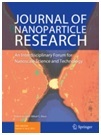
Saleh Group has published a journal article in J Nanopart Res, titled: "Aggregate size and structure determination of nanomaterials in physiological media: Importance of dynamic evolution". 5th year PhD student A. R, M. Nabiul Afrooz is the lead author of this article. The article presents new insight into nanomaterial aggregate size and structure formation under biologically relevant media via continuous time-dependent measurements. The findings of this article may have profound implications on effective dosimetry and on time of in vitro nanotoxicity assays.
Abstract: Most in vitro nanotoxicological assays are performed after 24 h exposure. However, in determining size and shape effect of nanoparticles in toxicity assays, initial characterization data is generally used to describe experimental outcome. The dynamic size and structure of aggregates are typically ignored in these studies. This brief communication reports dynamic evolution of aggregation characteristics of gold nanoparticles. The study finds that gradual increase in aggregate size of gold nanospheres (AuNS) occurs up to 6 h duration; beyond this time period, the aggregation process deviates from gradual to a more abrupt behaviour as large networks are formed. Results of the study also show that aggregated clusters possess unique structural conformation depending on nominal diameter of the nanoparticles. The differences in fractal dimensions of the AuNS samples likely occurred due to geometric differences, causing larger packing propensities for smaller sized particles. Both such observations can have profound influence on dosimetry for in vitro nanotoxicity analyses.
October 16, 2014 Dr. Saleh will be presenting an invited lecture to Civil and Environmental Engineering of University of Illinois at Urbana Champaign on October 16, 2014 at 12:00 pm (1518 Hydro).

Dr. Saleh will be presenting an invited lecture to Civil and Environmental Engineering of University of Illinois at Urbana Champaign on October 16, 2014 at 12:00 pm (1518 Hydro). His Talk is titled: "Environmental behavior of nanomaterials: Implications of material and environmental complexities". Saleh Group thanks the gracious host, Dr. Helen Nguyen.
October 09, 2014 Saleh Group has published a journal article in Part Fibre Toxicol, titled: "Single-walled carbon nanotubes increase pandemic influenza A H1N1 virus infectivity of lung epithelial cells".

Saleh Group has published a journal article in Part Fibre Toxicol, titled: "Single-walled carbon nanotubes increase pandemic influenza A H1N1 virus infectivity of lung epithelial cells". 5th year PhD student A. R, M. Nabiul Afrooz is a co-author of this article; which presents new insight into nanomaterial-virus interaction and its implication on virus infectability.
Abstract: The extraordinary physico-chemical properties that make nanomaterials promising for product enhancement applications may lead to adverse health effects from unintended occupational or environmental exposures. We have investigated the ability of pristine single-walled carbon nanotubes (SWCNTs) of diverse electronic structure to increase the susceptibility of small airway epithelial cells (SAEC) to influenza A H1N1 infection. For the first time, we report that pre-treatment of SAEC with SWCNTs significantly enhances viral infectivity that is not dependent on SWCNT electronic structure and aggregate size within the average range of 106 nm-243 nm. We further provide evidence to support that this altered infectivity in not likely due to direct interaction of the virus and nanoparticles, but rather a suppression of pro-inflammatory (RANTES) and anti-viral (ITIF2, ITIF3) gene expression by SWCNT. Overall results of this work reveal the potential for SWCNT to increase susceptibility to viral infections as a mechanism of adverse effect.
September 30, 2014 Dr. Saleh will be presenting an invited lecture to Civil and Environmental Engineering of Cornell University.

Dr. Saleh will be presenting an invited lecture to Civil and Environmental Engineering of Cornell University on October 02, 2014 at 4:30 pm (110 Hollister Hall). His Talk is titled: "Environmental behavior of nanomaterials: Implications of material and environmental complexities". Saleh Group thanks the gracious host, Dr. Damian Helbling.
September 03, 2014 Dr. Saleh will be presenting an invited lecture to Civil and Environmental Engineering of Rice University.

Dr. Saleh will be presenting an invited lecture to Civil and Environmental Engineering of Rice University on September 19, 2014 at 2:00 pm (Ryon Lab, 201). His Talk is titled: "Environmental behavior of nanomaterials: Implications of material and environmental complexities". Saleh Group thanks the gracious hosts, Drs. Alvarez and Li.
August 29, 2014 Saleh Lab has received funding from the National Science Foundation (NSF).

Saleh Lab has received funding from the National Science Foundation (NSF). The project titled: "NUE: Sustainable Nanotechnology Education for Undergraduate Engineering Students" will establish two new courses on nanotechnology at UT Austin. Drs. Mary Jo Kirisits and Hillary Hart of EWRE and Brian Korgel from Chemical Engineering are co-PIs in this project.
August 21, 2014 Saleh Group has published a journal article in Environmental Chemistry, titled: "A Critical Review of Nanohybrids: Synthesis, Applications, and Environmental Implications".
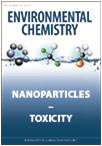
Saleh Group has published a journal article in Environmental Chemistry, titled: "A Critical Review of Nanohybrids: Synthesis, Applications, and Environmental Implications". 5th year PhD student Nirupam Aich is the lead author of this review, which presents a critical discussion on synthesis, applications, and altered physicochemical properties of nanohybrids and highlights the potential environmental implications of these 'horizon materials'.
Abstract: Nanomaterial synthesis and modification for applications have progressed to a great extent in last decades. Manipulation of physicochemical properties of a material at the nano-scale has been extensively performed to produce materials in novel applications. Controlling size, shape, surface functionality, etc. have been key to successful implementation of nanomaterials in multidimensional usage for electronics, optics, biomedical, drug delivery, and green fuel technology. Recently, focus has been on the conjugation of two or more nanomaterials to achieve increased multifunctionality as well as creating opportunities for next generation materials with enhanced performance. With incremental production and potential usage of such nanohybrids come the concerns about their ecological and environmental impact which will be dictated by their not-yet-understood physicochemical properties. While environmental implication studies concerning the single materials are yet to give an integrated mechanistic understanding and predictability in their environmental fate and transport, the importance of studying the novel nanohybrids with their multi-dimensional and complex behavior in environmental and biological exposure systems are immense. This article critically reviews nanohybrids literature and identifies potential environmental uncertainties of these emerging 'horizon materials'.
May 21, 2014 Saleh Group has published a journal article in Nanomaterials for its special issue on "Nanotoxicology" (Editor: Robert Tanguay), titled: "Emergent Properties and Toxicological Considerations for Nanohybrid Materials in Aquatic Systems".

Saleh Group has published a journal article in Nanomaterials for its special issue on "Nanotoxicology" (Editor: Robert Tanguay), titled: "Emergent Properties and Toxicological Considerations for Nanohybrid Materials in Aquatic Systems".This review article has been written jointly with Dr. Tara Sabo-Attwood's group at University of Florida. The article presents a critical discussion on altered physicochemical properties of nanohybrids and analyzes the validity of existing nanotoxicology paradigms against these unique properties.
Abstract: Conjugation of multiple nanomaterials has become the focus of recent materials development. This new material class is commonly known as nanohybrids or 'horizon nanomaterials'. Conjugation of metal/metal oxides with carbonaceous nanomaterials and overcoating or doping of one metal with another, have been pursued to enhance material performance and/or incorporate multifunctionality into nano-enabled devices and processes. Nanohybrids are already at use in commercialized energy, electronics, and medical products, which warrant immediate attention for their safety evaluation. These conjugated ensembles likely present a new set of physicochemical properties that are unique to their individual component attributes, hence increasing uncertainty in their risk evaluation. Established toxicological testing strategies and enumerated underlying mechanisms will thus need to be re-evaluated for assessment of these horizon materials. This review will present a critical discussion on altered physicochemical properties of nanohybrids and analyze the validity of existing nanotoxicology paradigms against these unique properties. The article will also propose strategies to evaluate the conjugate materials safety to help undertake future toxicological research on the nanohybrid material class.
April 17, 2014 Saleh Group has published a book chapter titled: "Roles of Geo- and Bio-Macromolecules on Environmental Interactions of Nanomaterials".
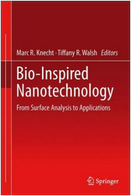
Saleh Group has published a book chapter titled: "Roles of Geo- and Bio-Macromolecules on Environmental Interactions of Nanomaterials" in Bio-inspired Nanotechnology-From Surface Analysis to Applications. This chapter discusses nanomaterial interaction with geo- and bio-macromolecules in the environment.
Abstract: Engineered nanomaterials (ENMs) are mostly synthesized with modified surfaces using various surfactants, polymeric, or biomolecule coatings to achieve desired functionality. When exposed to the environment, coatings on the ENMs will undergo the first set of interactions with natural geo- and bio-macromolecules, pre-existing in aqueous and/or soil matrices. Such interfacial interaction will likely alter the conformation and extent of coverage of the synthetic ENM surface coatings via exchange, displacement, and/or overcoating by environmental macromolecules. The exchange kinetics and extent of replacement of the synthetic coatings will profoundly impact environmental fate, transport, transformation, and toxicity of the ENMs. This chapter discusses the state of the art literature to identify key synthetic coating types, their interaction with the environmental and biological macromolecules, and illustrate the existing challenges to determine coating exchange kinetics and its environmental implications on ENMs.
April 9, 2014 Saleh Group has published a journal article in Journal of Intelligent Material Systems and Structures

Saleh Group has published a journal article in Journal of Intelligent Material Systems and Structures titled: "Detection of Crack Formation and Stress Distribution for Carbon Fiber Reinforced Polymer Specimens through Triboluminescent-Based Imaging". Fifth year PhD student, Nirupam Aich is the lead author in this paper. The article presents a simple and novel method to detect time evolution and stress distribution during compressive loading on CFRP matrices using a triboluminescent material.
Abstract: This article demonstrates the ability of surface coated triboluminescent (TL) materials to detect damage in carbon fiber reinforced polymer (CFRP) specimens. An experimental protocol was developed to test the efficiency of the TL-based diagnostic method using CFRP coupons under combined bending-compression conditions. Luminescence, emitted from the TL coatings under quasi-static loading, was detected by capturing digital images. We employed image processing software to quantify change in luminescence as a function of TL concentration. We observed that 10, 20, and 30% TL coating resulted in 25.3, 27.9, and 40.4 (arbitrary units) total luminescence, respectively; which shows a positive correlation of TL concentration with luminescence. Finite element simulation was also performed to understand the stress and strain distribution and to aid in understanding and correlating light emission regions on the CFRP coupons under bending deformation. The current work represents a step toward the development of a robust technology that employs TL material for early damage detection, consistent with theoretical predictions of damage occurrence.
Full PaperMarch 11, 2014 Saleh group's article - "Triboluminescence for distributed damage assessment in cement-based materials" has been featured in 2013's top 5 most read papers in J Intell Mater Syst Struct.

The article titled "Triboluminescence for distributed damage assessment in cement-based materials" published by Saleh group has been featured as one of 2013's top 5 most read papers in J Intell Mater Syst Struct. Fifth year PhD student, Nirupam Aich is the lead author of this paper. The article presents a simple and novel imaging technique for distributed crack sensing in cementitious matrices using a triboluminescent material.
Abstract: Triboluminescent materials are promising in the field of structural health monitoring for real-time crack detection and related damage assessment. This study presents a simple, but novel, image processing protocol to detect and quantify luminescence from crack formation in cement-based matrices. Mortar cubes of 2"x 2" (5.1 cm x 5.1 cm) were loaded in compression with an external coating of manganese-doped zinc sulfide (ZnS:Mn) triboluminescent material. The concentration of triboluminescent material and rate of loading were varied to evaluate luminescence response. A digital single lens reflex camera was employed to capture luminescence from the resulting cracks, which formed and propagated during failure. The images were then analyzed with an image processor, and total luminescence/pixel along the cracks was quantified. Results show that overall luminescence increases with the increase in triboluminescent concentration as well as with the rate of loading. This article presents a novel method that can be applied to monitor crack formation in cement-based materials, providing reliable accuracy in luminescence quantification.
Full PaperJanuary 20, 2014 Nirupam Aich awarded the prestigious American Chemical Society (ACS) Environmental Chemistry Graduate Student Award 2014.

Nirupam Aich, a 5th year PhD student in the Saleh Group has been awarded the prestigious American Chemical Society (ACS) Environmental Chemistry Graduate Student Award 2014. Nirupam competed nationally with the top environmental engineering graduate students to win this award. Award was based upon students' records in course work, evidence of research productivity and recommendations from graduate faculty advisor. Primary emphasis is given to Nirupam's potential for future contributions as professionals in environmental chemistry. Nirupam will receive a check from ACS Environmental Chemistry Division and his Institution's, and advisor's names will be posted on the ACS website for one full year. Congratulations Nirupam!
January 02, 2014 Saleh Group has co-authored a journal article in Environmental Science and Technology .

Saleh Group has co-authored a journal article in Environmental Science and Technology titled: "Tracking and Quantification of Single-walled Carbon Nanotubes in Fish Using Near Infrared Fluorescence". ARM Nabiul Afrooz, a fourth year PhD student also co-authored this paper. The article tracks SWCNTs in fathead minnows using near infrared fluorescence spectroscopy; toxicity from SWCNTs was also evaluated. The work is funded by the CBET program of NSF.
Abstract: Detection of SWCNTs in complex matrices presents a unique challenge as common techniques lack spatial resolution and specificity. Near infrared fluorescence (NIRF) has emerged as a valuable tool for detecting and quantifying SWCNTs in environmental samples by exploiting their innate fluorescent properties. The objective of this study was to optimize NIRF-based imaging and quantitation methods for tracking and quantifying SWCNTs in an aquatic vertebrate model in conjunction with assessing toxicological endpoints. Fathead minnows (Pimephales promelas) were exposed by single gavage to SWCNTs and their distribution was tracked using a custom NIRF imaging system for 7 days. No overt toxicity was observed in any of the SWCNT treated fish; however, histopathology observations from gastrointestinal (GI) tissue revealed edema within the submucosa and altered mucous cell morphology. NIRF images showed strong SWCNT-derived fluorescence signals in whole fish and excised intestinal tissues. Fluorescence was not detected in other tissues examined, indicating that no appreciable intestinal absorption occurred. SWCNTs were quantified in intestinal tissues using a NIRF spectroscopic method revealing values that were consistent with the pattern of fluorescence observed with NIRF imaging. Results of this work demonstrate the utility of NIRF imaging as a valuable tool for examining uptake and distribution of SWCNTs in aquatic vertebrates.
December 11, 2013 Saleh Group has co-authored a journal article in Environmental Science and Technology .

Saleh Group has co-authored a journal article in Environmental Science and Technology titled: "Effects of Chloride and Ionic Strength on Physical Morphology, Dissolution, and Bacterial Toxicity of Silver Nanoparticles". ARM Nabiul Afrooz and Nirupam Aich also co-authored this paper. This work is a result of successful collaboration with Dr. Mary J Kirisits' group at UT Austin. The article studies role of chloride at controlled ionic strength conditions on toxicity of silver nanoparticles (AgNPs). The paper elucidates mechanisms of toxicity using aggregation state, fractal dimension, morphology, and dissolution properties of AgNPs.
Abstract: In this study, we comprehensively evaluate chloride- and ionic-strength-mediated changes in the physical morphology, dissolution, and bacterial toxicity of silver nanoparticles (AgNPs), which are one of the most-used nanomaterials. The findings isolate the impact of ionic strength from that of chloride concentration. As ionic strength increases, AgNP aggregation likewise increases (such that the hydrodynamic radius [HR] increases), fractal dimension (Df) strongly decreases (providing increased available surface relative to suspensions with higher Df), and the release of Ag(aq) increases. With increased Ag+ in solution, Escherichia coli demonstrates reduced tolerance to AgNP exposure (i.e., toxicity increases) under higher ionic strength conditions. As chloride concentration increases, aggregates are formed (HR increases) but are dominated by AgCl0(s) bridging of AgNPs; relatedly, Df increases. Furthermore, AgNP dissolution strongly increases under increased chloride conditions, but the dominant, theoretical, equilibrium aqueous silver species shift to negatively charged AgClx(x-1)- species, which appear to be less toxic to E. coli. Thus, E. coli demonstrates increased tolerance to AgNP exposure under higher chloride conditions (i.e., toxicity decreases). Expression measurements of katE, a gene involved in catalase production to alleviate oxidative stress, support oxidative stress in E. coli as a result of Ag+ exposure. Overall, our work indicates that the environmental impacts of AgNPs must be evaluated under relevant water chemistry conditions.
August 22, 2013 A workshop on problem-based learning for nanotechnology has successfully been arranged by Drs. Saleh, Caicedo, and Pierce at USC.
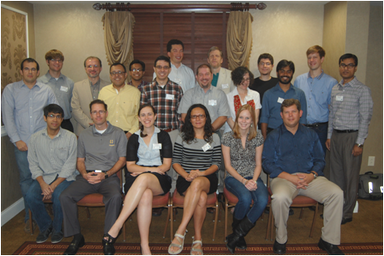
A workshop on problem-based learning for nanotechnology has successfully been arranged by Drs. Saleh, Caicedo, and Pierce at USC. Eminent scholars in the fields of nanotechnology, society and technology, and education attended the workshop. The workshop is an outcome of the NSF grant, funded by Dr. Mary Poats' NUE program. This workshop had been extremely exciting and resulted in stimulating discussions at the interface of nanotechnology and society. Saleh Lab sincerely thanks the participants and expects to continue to contribute in the field of nano-education with the support of Drs. Caicedo and Pierce and the respected participants.
August 14, 2013 Saleh Group has published a journal article in Nanotechnology.

Saleh Group has published a journal article in Nanotechnology titled: "Preparation of Non-Aggregating Aqueous Fullerenes in Highly Saline Solutions with A Biocompatible Non-Ionic Polymer". Nirupam Aich, fourth year PhD student is the lead author in this paper. The article prepares non-aggregating nC60s and nC70s using a bio-compatible polymeric coating.
Abstract: Size-tunable stable aqueous fullerenes were prepared with different concentrations of biocompatible block-copolymer pluronic (PA) F-127, ranging from 0.001% to 1% (w/v). Size uniformity increased with the increase in PA concentration, yielding optimum 58.8+/-5.6 and 61.8+/-5.6 nm nC60s and nC70s, respectively (0.10 %w/v PA), as observed using dynamic light scattering technique. Fullerene aqueous suspensions also manifested enhanced stability in saline solution, Dulbecco's Modified Eagle Medium (DMEM), and Roswell Park Memorial Institute (RPMI) culture medium. Transmission electron microscopy was performed to elaborate on the morphology and size specificity of fullerene clusters. Physicochemical characterizations of the suspended fullerenes were performed through UV-Vis spectroscopy and electrophoretic mobility measurements. PA molecules showed size restriction by encasement, as observed via molecular dynamic simulation. Such solubilization with controllable size and non-aggregating behavior can facilitate application-enhancement and mechanistic environmental and toxicological studies of size-specific fullerenes.
August 5, 2013 Saleh Lab has been awarded a grant by National Science Foundation (NSF).

Saleh Lab has been awarded a grant by Nano Environmental Health and Safety Program at the National Science Foundation (NSF). The project is titled: "Collaborative Research: Fate, Transport, and Organismal Uptake of Rod-Shaped Nanomaterials". It is a three-way collaborative effort between Dr. Saleh, Dr. Vikesland of Virginia Tech, and Dr. Murphy of University of Illinois-Urbana Champaign. The Saleh Lab will evaluate the role of aspect ratio on aggregation and deposition behavior of nanomaterials.
July 11, 2013 Saleh Group has published a journal article in Chemosphere.
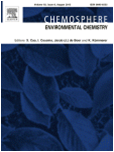
Saleh Group has published a journal article in Chemosphere titled: "Fractal Structures of Single-Walled Carbon Nanotubes in Biologically Relevant Conditions: Role of Chirality vs. Media Conditions". Recently graduated PhD student, Iftheker A Khan is the lead author in this paper. The article evaluates fractal dimension of single-walled carbon nanotubes in biological media conditions and studies the role of chirality on fractal structure formation.
Abstract: Aggregate structure of covalently functionalized chiral specific semiconducting single-walled carbon nanotubes (SWNTs) was systematically studied employing static light scattering (SLS). Fractal dimensions (Df) of two specific chirality SWNTs- SG65 and SG76 SWNTs with (6, 5) and (7, 6) chiral enrichments - were measured under four biological exposure media conditions, namely: Dulbecco's modified eagle medium (DMEM), minimum essential medium (MEM), Roswell Park Memorial Institute (RPMI) 1640 medium, and 0.9% saline solution. The SWNTs exhibited chiral dependence on Df with SG65 showing more fractal or loosely bound aggregate structures, i.e., lower Df values (range of 2.24+/-0.03 to 2.64+/-0.05), compared to the SG76 sample (range of 2.58+/-0.13 to 2.90+/-0.08). All the Df values reported are highly reproducible, measured from multiple SLS runs and estimated with 'random block-effects' statistical analysis that yielded all p values to be <0.001. The key mechanism for such difference in Df between the SWNT samples was identified as the difference in van der Waals (VDW) interaction energies of these samples, where higher VDW of SG76 resulted in tighter packing density. Effect of medium type showed lower sensitivity; however, presence of di-valent cations (Ca2+) in DMEM and MEM media resulted in relatively loose or more fractal aggregates. Moreover, presence of fetal bovine serum (FBS) and bovine serum albumin (BSA), used to mimic the in-vitro cell culture condition, reduced the Df values, i.e., created more fractal structures. Steric hindrance to aggregation was identified as the key mechanism for creating the fractal structures. Also, increase in FBS concentration from 1% to 10% resulted in increasingly lower Df values.
Full PaperJune 28, 2013 Saleh Group has published a journal article in Environmental Science and Technology.

Saleh Group has published a journal article in Environmental Science and Technology titled: "Single-Walled Carbon Nanotube Transport in Representative Municipal Solid Waste Landfill Conditions". Recently graduated PhD student, Iftheker A Khan is the lead author in this paper. The article studies transport of single-walled carbon nanotubes in complex landfill conditions. This study is a result of a successful collaboration of the Saleh Lab with Dr. Berge's municipal solid waste research.
Abstract: Single-walled carbon nanotubes (SWNTs) are being used in many consumer products and devices. It is likely that as some of these products reach the end of their useful life, they will be discarded in municipal solid waste landfills. However, there has been little work evaluating the fate of nanomaterials in solid waste environments. The purpose of this study is to systematically evaluate the influence of organic matter type and concentration in landfill-relevant conditions on SWNT transport through a packed-bed of mixed municipal solid waste (MSW) collectors. The influence of individual waste materials on SWNT deposition is also evaluated. Transport experiments were conducted through saturated waste-containing columns over a range of simulated leachate conditions representing both mature and young leachates. Results indicate that SWNT transport may be significant in mature waste environments, with mobility decreasing with decreasing humic acid concentration. SWNT mobility in the presence of acetic acid was inhibited, suggesting their mobility in young waste environments may be small. SWNTs also exhibited collector media-dependent transport, with greatest transport in glass and least in paper. These results represent the first study evaluating how leachate age and changes in waste composition influence potential SWNT mobility in landfills.
Full PaperJune 3, 2013 Saleh Group has published an article on nanotechnology education in the Journal of Nano Education.

Saleh Group has published an article on nanotechnology education in the Journal of Nano Education. The title of the article is: "Nano in a Global Context: Modular Course Design with Integrated Ethics Improves Core Knowledge in Nanotechnology". Dr. Saleh is the lead author in this article. USC's Drs. Juan Caicedo (Civil and Environmental Engineering) and Ann Johnson (History and Philosophy) are the other lead authors in this article. This article is the first in a series of education based papers that resulted from Saleh Group's NSF grant on nanotechnology edcaution
Abstract: A problem-based learning (PBL) course was designed to teach the principles and application of nanotechnology through a real-world problem of global significance: water decontamination. The novel course design also attempted a close integration of social and ethical component of nanotechnology through a weekly lecture on these aspects, in parallel to the technical component. Overall the course pursued three principal goals: introduce nanotechnology to engineering students who otherwise have no formal exposure to this emerging technology; integrate the approaches pertaining to nanotechnology offered by different engineering disciplines; and fully incorporate discussions about the practical ethical implications of implementing nano in a real, developing world context. In this endeavor, the course structure was based on introductory modules discussing fundamental principles of nanotechnology as well as key issues related to water contamination in developing countries. Four inquiry-based modules followed the introductory segment engaged students in learning nanotechnology principles to solve water contamination issues, namely: arsenic removal, virus detection, mechanical sensing, and detection of arsenic. Assessment conducted via pre- and post-tests and a survey using a nanotechnology concept inventory show substantial gain in core knowledge. It is believed that the PBL based course design alongside with the integrated social and ethical component encouraged the students to learn and apply the principles of nanotechnology toward a real-life social problem. The ethical perspective has likely reinforced the purpose of learning and thus has resulted in an enhanced learning experience.
May 17, 2013 Saleh Group has co-authored an article published in Il Nuovo Cimento C, a journal published by Italian Physical Society.
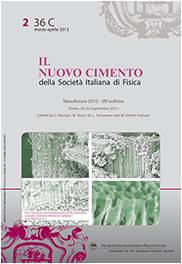
Saleh Group has co-authored an article published in Il Nuovo Cimento C, a journal published by Italian Physical Society. The title of the paper is: "Nanoparticle dynamics in the presence and absence of a cellular uptake altering chemical". Fourth year PhD student, A. R. M. Nabiul Afrooz is a co-author in this paper. The article is a result of the collaboration between the Saleh Lab and Dr. Saber Hussain of AFRL.
Abstract: The far-reaching applications of nanoparticles (NPs) in drug delivery, medical imaging, diagnostics, and therapeutics have led to an increased potential for interfacing with a diverse range of biological environments. While metallic NPs such as copper NPs have been explored for their antimicrobial and catalytic properties, they have been shown to induce undesirable toxic effects. Nonetheless, biomodulators may be employed to control this cytotoxicity. Dynasore is a dynamin GTPase inhibitor that has been shown to rapidly and reversibly block clathrindependent endocytic traffic within minutes of application. Here, we demonstrate that Dynasore can chemically bio-modulate the toxic effects of copper nanoparticles (Cu NPs), but not through reducing Cu NP internalization. In fact, Dynasore seems to possess secondary effects that have been unreported to date. We propose and test three potential mechanisms of cytotoxicity modulation: 1) through changes in agglomeration pattern, 2) through potential quenching of reactive oxygen species (ROS), and 3) through Cu+2 ion chelation. These results have far-reaching implications for understanding the complex interactions that occur at the interface of NPs in biological environments, especially during mechanistic chemical modification strategies.
Full Paper
April 29, 2013 Dr. Saleh has officially accepted a faculty position at the department of Civil, Architectural and Environmental Engineering (CAEE), Cockrell School of Engineering, University of Texas at Austin. .

Dr. Saleh has officially accepted a faculty position at the department of Civil, Architectural and Environmental Engineering (CAEE), Cockrell School of Engineering, University of Texas at Austin. He will join there in January 2014. Saleh Lab will continue the ongoing research at USC and ensure a seamless transition to UT Austin. We thank the support of all the funding agencies (NSF, NIH, USAF, SCDOT, GSE&C), and collaborators for enabling to establish a successful research program.
April 09, 2013 Nirupam Aich, a 4th year PhD student in the Saleh Group, has been awarded the Support to Promote Research and Creativity (SPARC) Graduate Research Fellowship.

Nirupam Aich, a 4th year PhD student in the Saleh Group, has been awarded the Support to Promote Research and Creativity (SPARC) Graduate Research Fellowship. He is one of the first recipients of this fellowship and the only environmental engineering graduate student awardee, to receive this prestigious fellowship awarded by the Office of the Vice President for Research. The $5000 SPARC fellowship, which rewards excellence in graduate student grant writing and creativity in research, will benefit Nirupam's dissertation and other academic activities.
March 03, 2013 Saleh Group has published a journal article in Journal of Intelligent Material Systems and Structures titled: "Triboluminescence for Distributed Damage Assessmentin Cement Based Materials".

Saleh Group has published a journal article in Journal of Intelligent Material Systems and Structures titled: "Triboluminescence for Distributed Damage Assessmentin Cement Based Materials". Third year PhD student, NirupamAich is the lead author in this paper. The article presents a simple and novel method to detect crack on cementitious matrices using a triboluminescent material.
Abstract: Triboluminescent (TL) materials are promising in the field of Structural Health Monitoring (SHM) for real time crack detection and related damage assessment. This study presents a simple, however novel, image processing protocol to detect and quantify luminescence from crack-formation in cement based matrices. 2" × 2" (5.1 cm x 5.1 cm)mortar cubes were loaded in compression with an external coating of manganese doped zinc sulfide (ZnS:Mn) TL material. The concentration of TL material and rate of loading were varied to evaluate luminescence response. A DSLR camera was employed to capture luminescence from the resulting cracks which formed and propagated during failure. The images were then analyzed with an image processor and total luminescence/pixel along the cracks was quantified. Results show that overall luminescence increase with the increase in TL concentration as well as with the rate of loading. This article presents a novel method that can be applied to monitor crack formation in cement based materials, providing reliable accuracy in luminescence quantification.
February 21, 2013 Dr Saleh's poster titled "Mechanistic hetero-aggregation of gold nanoparticles for a Wide Range of Solution chemistries" has been awarded Honorable Mention at the 1st Sustainable Nanotechnology Conference, Arlington, VA.

Dr Saleh's poster titled "Mechanistic hetero-aggregation of gold nanoparticles for a Wide Range of Solution chemistries" has been awarded Honorable Mention at the 1st Sustainable Nanotechnology Conference, Arlington, VA. The award was announced on Nov 6, 2012 and has recently been listed in Sustainable Nanotechnology's February newsletter. This poster presented the results of a recently published paper in ES&T. Please refer to the published article here.
January 28, 2013 Saleh Group has published a journal article in Environmental Science and Technology titled: "Mechanistic Hetero-aggregation of Gold Nanoparticles in a Wide Range of Solution Chemistry".

Saleh Group has published a journal article in Environmental Science and Technology titled: "Mechanistic Hetero-aggregation of Gold Nanoparticles in a Wide Range of Solution Chemistry". Third year PhD student, ARM Nabiul Afrooz is the lead author in this paper. The article studies aggregation of gold nanospheres in presence of non-ionic polymeric surfactant coated single-walled carbon nanotubes in a wide range of solution chemistry.
Abstract:
Hetero-aggregation behavior of gold nanospheres (AuNS) in presence of pluronic acid (PA) modified single-walled carbon nanotubes (PA-SWNTs), was systematically studied for a wide range of mono- and di-valent (NaCl and CaCl2) electrolyte conditions. Homo-aggregation rates of AuNS were also determined to delineate hetero-aggregation mechanisms. Time resolved dynamic light scattering (DLS) was employed to monitor aggregation. The homo-aggregation of AuNS showed classical Derjaguin-Landau-Verwey-Overbeek (DLVO) type behavior with defined reaction limited (RLCA) and diffusion limited (DLCA) aggregation regimes. PA-SWNTs homo-aggregation on the other hand showed no response with electrolyte increase. AuNS hetero-aggregation rates on the other hand, showed regime dependent response. At low electrolyte or RLCA regime, AuNS hetero-aggregation showed significantly slower rates, compared to its homo-aggregation behavior; while, enhanced hetero-aggregation was observed for DLCA regime. The key mechanisms of hetero-aggregation of AuNS are identified as 'obstruction to collision' at RLCA regime and 'facilitating enhanced attachment' at DLCA regime, manifested by the presence of PA-SWNTs. Presence of Suwannee River humic acid (SRHA) also showed aggregation enhancement for both homo- and hetero-systems, in presence of divalent Ca2+ ions. Bridging between SRHA molecules is identified as the key mechanism for increased aggregation rate. The findings of this study are relevant, particularly to co-existence of engineered nanomaterials. The strategy of using non-aggregating PA-SWNTs is a novel experimental strategy that can be adopted elsewhere to further the hetero-aggregation studies for a wider set of particles and surface coatings.
January 23, 2013 Nabiul Afrooz awarded the prestigious American Chemical Society (ACS) Environmental Chemistry Graduate Student Award 2013.

ARM Nabiul Afrooz, a 3rd year PhD student in the Saleh Group has been awarded the prestigious American Chemical Society (ACS) Environmental Chemistry Graduate Student Award 2013. Nabiul competed nationally with the top environmental engineering graduate students to win this award. Award was based upon students' records in course work, evidence of research productivity and recommendations from graduate faculty advisor. Primary emphasis is given to Nabiul's potential for future contributions as professionals in environmental chemistry. Nabiul will receive a check from ACS Environmental Chemistry Division and his Institution's, and advisor's names will be posted on the ACS website for one full year. Congratulations Nabiul!
January 23, 2013 Saleh Group has published a journal article in Environmental Science and Technology titled: "Chirality Affects Aggregation Kinetics of Single-Walled Carbon Nanotubes".

Saleh Group has published a journal article in Environmental Science and Technology titled: "Chirality Affects Aggregation Kinetics of Single-Walled Carbon Nanotubes". Recently graduated PhD student, Iftheker A Khan is the lead author in this paper. The article studies the role of chirality on aggregation of single-walled carbon nanotubes.
Abstract:
Aggregation kinetics of chiral-specific semiconducting single-walled carbon nanotubes (SWNTs) were systematically studied through time-resolved dynamic light scattering. Varied monovalent (NaCl) and divalent (CaCl2) electrolyte composition was used as background solution chemistry. Suwannee River humic acid (SRHA) was used to study the effects of natural organic matter on chirally separated SWNT aggregation. Increasing salt concentration and introduction of divalent cations caused aggregation of SWNT clusters by suppressing the electrostatic repulsive interaction from the oxidized surfaces. The (6,5) SWNTs, i.e., SG65, with relatively lower diameter tubes compared to (7,6), i.e., SG76, showed substantially higher stability (7 and 5 folds for NaCl and CaCl2, respectively). The critical coagulation concentration (CCC) values were 96 and 13 mM NaCl in case of NaCl and 2.8 and 0.6 mM CaCl2 for SG65 and SG76, respectively. The increased tube diameter for (7,6) armchair SWNTs likely presented with higher van der Waals interaction and thus increased the aggregation propensity substantially. The presence of SRHA enhanced SWNT stability in divalent CaCl2 environment through steric interaction from adsorbed humic molecules; however showed little or no effects for monovalent NaCl. The mechanism of aggregation-describing favorable interaction tendencies for (7,6) SWNTs-is probed through ab initio molecular modeling. The results suggest that SWNT stability can be chirality dependent in typical aquatic environment.
December 7, 2012 A R M Nabiul Afrooz awarded Bert Storey Fellowship

A R M Nabiul Afrooz, a third year PhD student in the Saleh Group has been awarded the Bert Storey Fellowship, 2012-2013. This fellowship is awarded by Civil and Engineering Department of the College of Engineering and Computing in USC to the top civil and environmental graduate student. The fellowship is named after Mr. Bert Storey, a long time patron of the University. Nabiul will receive an honorarium to support his research activities. Congratulations Nabiul!
November 23, 2012 Saleh Group has co-authored a journal article published in J Mater Chem B.

Saleh Group has co-authored a journal article published in J Mater Chem B titled: "A novel core-shell microcapsule for encapsulation and 3D culture of embryonic stem cells". This work is a result of a collaborative work with Dr. Xiaoming He of Ohio State University.
Abstract:
In this study, we report the preparation of a novel microcapsule of 100 ?m with a liquid (as compared to a solid-like alginate hydrogel) core and an alginate-chitosan-alginate (ACA) shell for encapsulation and culture of embryonic stem (ES) cells in the miniaturized 3D space of the liquid core. Murine R1 ES cells cultured in the microcapsules were found to survive (>90%) well and proliferate to form either a single aggregate of pluripotent cells or an embryoid body (EB) of more differentiated cells in each microcapsule within 7 days, depending on the culture medium used. This novel microcapsule technology allows massive production of the cell aggregates or EBs of uniform size and controllable pluripotency, which is important for the practical application of stem cell based therapy. Moreover, the semipermeable ACA shell was found to significantly reduce immunoglobulin G (IgG) binding to the encapsulated cells by up to 8.2 times, compared to non-encapsulated cardiac fibroblasts, mesenchymal stem cells, and ES cells. This reduction should minimize inflammatory and immune responses induced damage to the cells implanted in vivo because IgG binding is an important first step of the undesired host responses. Therefore, the ACA microcapsule with selective shell permeability should be of importance to advance the emerging cell-based medicine.
Full Paper
November 19, 2012 Saleh Group has published a journal article in Chemosphere.

Saleh Group has published a journal article in Chemosphere titled: "Spheres vs. Rods: The Shape of Gold Nanoparticles Influences Aggregation and Deposition Behavior". 3rd year graduate student A R M Nabiul Afrooz is the lead author in this paper. The article presents a fundamental study of shape-dependent aggregation and deposition of nano-scale gold in environmentally relevant systems. This article is the first in the series of articles resulting from a successful collaborative with Dr. Catherine Murphy at UIUC and Dr. Saber Hussain at USAF.
Abstract:
The influence of shape on nanomaterial aggregation and deposition was systematically studied with poly-acrylic acid (PAA) coated uniform-sized gold nanospheres (AuNSs) and nanorods (AuNRs). Time resolved dynamic light scattering was employed to study their aggregation kinetics in a wide range of mono- and di-valent electrolyte conditions. Results indicated that PAA coated AuNSs have higher aggregation propensity compared to anisotropic PAA coated AuNRs, as observed through critical coagulation concentration (CCC). The CCC values were estimated as 50 mM NaCl and 1.8 mM CaCl2 for AuNS, which showed substantial increase to 250 mM NaCl and 7 mM CaCl2 for anisotropic AuNRs. Though electrokinetic behavior showed similar surface potential for the spherical and rod-shaped materials, the geometric differences between the samples have likely resulted in unique conformation of the PAA coatings, leading to different magnitudes of steric hindrances and hence yielding the observed aggregation behavior. The deposition kinetics was monitored using the quartz crystal microbalance with dissipation technique. AuNRs showed relatively slower deposition compared to AuNSs for low electrolytes concentrations. With the increase in electrolyte concentration, the differences in deposition rates between spheres and rods diminished. The results from this study showed that the shape of nanomaterials can influence interfacial properties and result in unique aggregation and deposition behavior under typical aquatic conditions.
Full Paper
November 13, 2012 Nirupam has successfully defended his MS thesis.

Nirupam Aich has successfully defended his MS thesis titled: "Method Development for Transmission Electron Microscopy of Carbon Nanotubes and for Distributed Sensing with Triboluminescent Materials in The Premise of Sustainable Infrastructure". Both the papers presented in this thesis have already been accetpted for publication. Congratulations Nirupam! Nirupam is continuing at USC as a PhD student.
October 04, 2012 Dr. Saleh has held an outreach effort at the Dutch Fork High School, Irmo, SC.

Dr. Saleh has held an outreach effort at the Dutch Fork High School, Irmo, SC. The outreach involved a seminar on nanotechnology, followed by an activity on 'surface area to volume ratio' using fullerene models. Dr. Saleh extended this outreach through Dutch Fork High School's Physical Sciences Honors course (Course No.: 3211STHW) with 48 freshmen. This activity will be repeated at the end of this month. A more extensive outreach effort involving a three class series with lectures, hands on activities, and EM via Skype program will be executed over Spring 2013.
September 28, 2012 Society of Toxicology (SOT) has inducted Dr. Saleh as a full member.

Society of Toxicology (SOT) has inducted Dr. Saleh as a full member. Dr. Saleh is honored with the induction and will be deeply involved in the SOT activities. The first of such activities is a professional course offering by Dr Saleh titled: 'Aggregation Behavior of Nanomaterials Under Biological Exposure Conditions' at the 52nd SOT Annual Meeting from March 10-14, 2013 at San Antonio, TX.
September 24, 2012 Saleh Group has published a journal article in J Res Updates in Poly Sci titled: "Applied TEM Approach for Micro/Nanostructural Characterization of Carbon Nanotube Reinforced Cementitious Composites".

Saleh Group has published a journal article in J Res Updates in Poly Sci titled: "Applied TEM Approach for Micro/Nanostructural Characterization of Carbon Nanotube Reinforced Cementitious Composites". 3rd year graduate student Nirupam Aich is the lead author in this paper. The article presents a novel approach to perform electron microscopy on complex cementitious composite matrices to characterize carbonaceous nanomaterial and cement matrix compatibility. This article is the first in the series of articles in the making on Saleh Group's collaborative effort with Drs. Ziehl and Matta at USC.
August 30, 2012 Saleh Lab has received an R01 funding from the National Institute of Health (NIH).

Saleh Lab has received an R01 funding from the National Institute of Health (NIH). The project titled: "Contribution of Toll-like Receptors in the Pulmonary Response to Nanoparticles and Pathogens" is a collaborative effort with Dr. Tara Sabo-Attwood at the University of Florida. The Saleh Lab will evaluate nanotube-virus interfacial interaction to study the mechanisms of immune signals of lung epithelial cells triggered by the pathogenic and particulate entities.
August 23, 2012Dr. Iftheker A Khan has successfully defended his doctoral dissertation work titled: "Aggregation Behavior of Chiral Single-Walled Carbon Nanotubes and Their Transport in Landfill Conditions".

Dr. Iftheker A Khan has successfully defended his doctoral dissertation work titled: "Aggregation Behavior of Chiral Single-Walled Carbon Nanotubes and Their Transport in Landfill Conditions". Dr. Khan has already published 5 journal articles with 4 more under review. His achievements has earned him a post-doctoral position at the National Center for Toxicological Research (NCTR) at Little Rock, AR. Congratulations Dr. Khan!
May 01, 2012 Iftheker A Khan Chosen as USC Graduate School Summer Dissertation Fellow

Iftheker A khan, a final year PhD student in the Saleh Group has been chosen as the 2012 USC Graduate School Summer Dissertation Fellow. This fellowship is awarded by the University of South Carolina Graduate School and only four students in the entire university is bestowed with such an honor. Iftheker's excellent academic record and exemplary research performance has earned him this honor. As part of this fellowship, Iftheker will receive a $2,500 financial award toward his graduation and dissertation completion. Congratulations Iftheker!
April 20, 2012 Samuel P. Rollings won the 1st prize in Discovery Day

Samuel P. Rollings, a senior at USC and a Magellan Scholar working in Saleh Lab has won the 1st prize at Discovery Day. The title of his poster was "Modular Nano-enabled Sorption Cartridge for Water Treatment". This work is focused on developing a simply yet novel technique to coat filter surfaces with advanced nanomaterials. Congratulations Sam!
April 13, 2012 Saleh Group has published a journal article in Applied Biochemistry and Biotechnology titled, "Effect of Gold Nanosphere Surface Chemistry on Protein Adsorption and Cell Uptake in Vitro".

Saleh Group has published a journal article in Applied Biochemistry and Biotechnology titled, "Effect of Gold Nanosphere Surface Chemistry on Protein Adsorption and Cell Uptake in Vitro". 3rd year graduate student ARM Nabiul Afrooz and Dr. Saleh are co-authors in this paper with the nanotoxicology research group at Wright Patterson Air Force Base.
Abstract:
Gold nanoparticles exhibit unique spectral properties that make them ideal for biosensing, imaging, drug delivery, and other therapeutic applications. Interaction of gold nanoparticles within biological environments is dependent on surface characteristics, which may rely on particular capping agents. In this study, gold nanospheres (GNS) synthesized with different capping agents-specifically citric acid (CA) and tannic acid (TA)- were compared for serum protein adsorption and cellular uptake into a lung epithelial cell-line (A549). Both GNS samples exhibited noticeable protein adsorption based on surface charge data after exposure to serum proteins. Light scattering measurements revealed that GNS-CA-protein composites were smaller and less dense compared to GNS-TA-protein composites. The cell uptake characteristics of these NPs were also different. GNS-CA formed large clusters and elicited high uptake, while GNS-TA were taken up as discrete particles, possibly through non-endosomal mechanisms. These results indicate that the capping agents used for GNS synthesis result in unique biological interactions.
April 6, 2012 Saleh Group has recently received a competitive internal grant from the USC's VP of Research, Dr. Nagarkatii's office, under ASPIRE-I program.

Saleh Group has recently received a competitive internal grant from the USC's VP of Research, Dr. Nagarkatii's office, under ASPIRE-I program. The title of the proposals is: "Heteroaggregation and deposition of chirally separated single-walled carbon nanotubes in heterogeneous aquatic systems". This project will deal with development of novel techniques for analyzing fate and transport of nanomaterials in complex natural systems.
March 29, 2012 A journal article in the Journal of Nanoscience and Nanotechnology has been accepted where Dr. Saleh and iftheker Khan are co-authors.

A journal article entitled "Ultrasonication Study for Suspending Single-Walled Carbon Nanotubes in Water" has recently been accepted for publication in the Journal of Nanoscience and Nanotechnology where Dr. Saleh and Iftheker Khan are co-authors. This paper focuses on development of ultrasonication based standardized protocol for single walled carbon nanotube dispersion. .
Abstract:
A systematic calorimetry-based technique was developed to standardize single-walled carbon nanotube (SWNT) dispersion protocol. Simple calorimetric experiments were performed to benchmark the performance of the ultra-dismembrator. Temperature profiles for the sonication period were utilized to estimate energy input to the system. Energy loss profile was generated for the ultra-dismembrator in use and a calibration relationship was formulated that could standardize the sonication process. The standardized protocol was used to prepare aqueous SWNT suspensions-sonicating SWNTs in a varied range of input energy (18-100 kJ) in water. SWNT mass fractions suspended for each energy input was accurately measured and the suspended SWNT samples were characterized for morphology, surface potential, cluster size and structure, and chemical functionality using high resolution transmission electron microscopy (HRTEM), electrophoresis, dynamic and static light scattering (DLS/SLS), and Raman spectroscopy. The study demonstrated that suspended mass of SWNTs increased up to 18 kJ of energy input with no further increase upon continued energy input. The physicochemical properties showed similar trend for energy input. The aggregate cluster size, surface potential behavior, as well as the Raman defect properties plateaued after the initial energy input. The significant changes observed were limited to morphological properties, i.e., shorter length, debundled, and sharp edged SWNTs and fractal cluster formation (lower Df) with increased input energy.
March 28, 2012 Iftheker Khan, a fourth year PhD student in Saleh Group has received 2nd prize in poster presentation on the Graduate Student Day 2012 at the University of South Carolina.

Iftheker Khan, a fourth year PhD student in Saleh Group has received 2nd prize in poster presentation on the Graduate Student Day 2012 at the University of South Carolina. The topic of his poster was 'Fractal Structures of Single-Walled Carbon Nanotubes in Environmental and Biologically Relevant Conditions: Role of Chirality.' Congratulations Iftheker!
January 13, 2012 A journal article in Langmuir has been published where Dr. Saleh and A R M Nabiul Afrooz are co-authors.

A journal article entitled "Does Shape Matter? Bioeffects of Gold Nanomaterials in a Human Skin Cell Model" has recently been published in Langmuir where Dr. Saleh and Nabiul Afrooz are co-authors. This paper focuses on the shape dependent cellular response to gold nanoparticles.
Abstract:
Gold nanomaterials (AuNMs) have distinctive electronic and optical properties, making them ideal candidates for biological, medical, and defense applications. Therefore, it is imperative to evaluate the potential biological impact of AuNMs before employing them in any application. This study investigates two AuNMs with different aspect ratios (AR) on mediation of biological responses in the human keratinocyte cell line (HaCaT) to model potential skin exposure to these AuNMs. The cellular responses were evaluated by cell viability, reactive oxygen species (ROS) generation, alteration in gene and protein expression, and inflammatory response. Gold nanospheres, nominally 20 nm in diameter and coated with mercaptopropane sulfonate (AuNS-MPS), formed agglomerates when dispersed in cell culture media, had a large fractal dimension (Df = 2.57+-0.4) (i.e., tightly bound and densely packed) and were found to be nontoxic even at the highest dose of 100 ?g/mL. Highly uniform, 16.7 nm diameter, and 43.8 nm long polyethylene glycol-capped gold nanorods (AuNR-PEG) also formed agglomerates when dispersed into the cell culture media. However, the agglomerates had a smaller fractal dimension (Df = 1.28+-0.08) (i.e., loosely bound) and were found to be cytotoxic to the HaCaT cells, with a significant decrease in cell viability occurring at 25 microgram/mL and higher. Moreover, AuNR-PEG caused significant ROS production and up-regulated several genes involved in cellular stress and toxicity. These results, combined with increased levels of inflammatory and apoptotic proteins, demonstrated that the AuNR-PEG induced apoptosis. Exposure to AuNS-MPS, however, did not show any of the detrimental effects observed from the AuNR-PEG. Therefore, we conclude that shape appears to play a key role in mediating the cellular response to AuNMs.
Full Paper
December 06, 2011 A recent journal article from Saleh group titled "Preparation and Characterization of Stable Aqueous Higher Order Fullerenes" has been accepted in Nanotechnology.

A recent journal article from Saleh group titled "Preparation and Characterization of Stable Aqueous Higher Order Fullerenes" has been accepted in Nanotechnology. 2nd year graduate student Nirupam Aich is the lead author of this paper. The paper discussed aqueous solubilization of higher fullerenes and presents their interaction energies at molecular level and physicochemical properties. This paper has been highlighted by the journal as an 'article of particular interest'.
Full Paper
December 5, 2011 Saleh Group has recently received the Magellan Scholar Program grant from the University of South Carolina titled "MGS Modular Nano-Enabled Sorption Cartridge Design for Water Treatment".

Saleh Group has recently received the Magellan Scholar Program grant from the University of South Carolina titled "MGS Modular Nano-Enabled Sorption Cartridge Design for Water Treatment". This grant will also help Sam Rollings, an undergraduate student from this group to perform innovative research as a prestigious Magellan scholar to remediate water pollution issues. Potential application of carbonaceous nanoparticles to perform in advanced water treatmet processes will be the focus of this research.
November 10, 2011 Saleh Group has recently received a US Air Force grant from the Wright Patterson Air Force Base. The grant will focus on mechanistic understanding of nano-toxicity of metallic nanoparticles.

Saleh Group has recently received a US Air Force (USAF) grant from the Wright Patterson Air Force Base titled, "Developing Predicting Capability for Nanoparticle Aggregation and Aggregate Structure Evolution in Biologically Relevant Systems". The project will focus on mechanistic understanding of nano-toxicity of metallic nanoparticles. This project is a result of a successful collaboration between Dr. Saleh and an eminent toxicologist and scientist Dr. Saber Hussain of USAF.
October 27, 2011 Nirupam Aich awarded Bert Storey Fellowship.
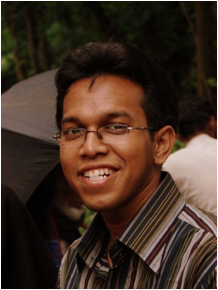
Nirupam Aich, a second year PhD student in the Saleh Group has been awarded the M. Bert Storey Endowed Graduate Fellowship, 2011-2012. This fellowship is awarded by Civil and Engineering Department of the College of Engineering and Computing in USC to the top Civil and Environmental graduate student. The fellowship is named after Mr. Bert Storey, a long time patron of the University. Nirupam will receive a $1,250 award as acknowledgement of his outstanding performance in study and research. Congratulations Nirupam! Iftheker A. Khan, another senior PhD student in the Saleh Group was awarded the same fellowship last year.
September 30, 2011 Saleh Group has published three journal papers in Toxicology and Applied Pharmacology, Reprod Toxicol and Water Res titled, "The effects of TiO2 and Ag nanoparticles on reproduction and development of Drosophila melanogaster and CD-1", "Investigating the effects of functionalized carbon nanotubes on reproduction and development in Drosophila melanogaster and CD-1 mice", and "Removal of bisphenol A and 17a-ethinyl estradiol from landfill leachate using single-walled carbon nanotubes", respectively.
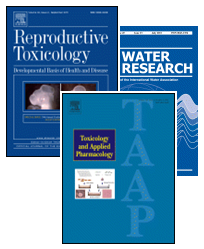
Saleh Group has published three journal papers in Toxicology and Applied Pharmacology, Reprod Toxicol and Water Res titled, "The effects of TiO2 and Ag nanoparticles on reproduction and development of Drosophila melanogaster and CD-1", "Investigating the effects of functionalized carbon nanotubes on reproduction and development in Drosophila melanogaster and CD-1 mice", and "Removal of bisphenol A and 17a-ethinyl estradiol from landfill leachate using single-walled carbon nanotubes", respectively. 2nd year graduate student ARM Nabiul Afrooz, 3rd year graduate student Iftheker A Khan, and Dr. Saleh are co-authors in these papers. The toxicology papers are a result of successful collaboration between the Saleh Group at USC and the Walker Group of Queens University, Canada. The third paper is published as an outcome of Dr. Saleh's research work on SWNT membranes with Dr. Yoon of USC.
August 15, 2011 Dr. Saleh is co-organizing an Environmental Chemistry (ENVR) conference session at the 243rd ACS National Meeting-San Diego next March.

Dr. Saleh is co-organizing an Environmental Chemistry (ENVR) conference session at the 243rd ACS National Meeting-San Diego next March with Drs. John Fortner (University of Washington-St. Louis) and Saber Hussain (Wright Patterson Airforce Base and Wright State University). The title of session is "Nanomaterial Interaction on Biological Interfaces". All the organizers encourage authors to submit abstracts to this session. The abstract submission to PACS is now open thru October 17, 2011.
June 3, 2011 Saleh Group has presented two posters at the first Gordon Research Conference on Environmental Nanotechnology.

Saleh Group has presented two posters at the first Gordon Research Conference on Environmental Nanotechnology. The posters were titled as: "Aggregation Kinetics and Fractal Structures of Chirally Separated Single-Walled Carbon Nanotubes in Environmental and Biologically Relevant Systems" and "Removal of Micropollutants from Landfill Leachate, Seawater, and Brackish Water Using Single-Walled Carbon Nanotubes". These studies were funded by NSF and GSEC, respectively.
April 2, 2011 Saleh Group presented 5 technical papers in the 241st ACS National Meeting held at Anaheim, CA.

In the most recent ACS National Meeting held at Anaheim, CA from March 27-31, 2011, three members from Saleh Group, ARM Nabiul Afrooz, Nirupam Aich, and Iftheker A. Khan, presented five papers in the area of environmental fate, transport, and effects of engineered nanomaterials. These papers were presented in the environmental chemistry division that included topics of aggregation kinetics and aggregate structure studies of chiral single-walled carbon nanotubes (Khan et al.) aggregation behaviour of higher fullerenes and hybrid nanomaterials (Aich and Saleh), and aggregation kinetics of rod-like gold nanomaterials(Afrooz et al).
March 11, 2011 Dr. Saleh has recently presented an invited lecture at Wright Patterson Air Force Base (WPAFB), Dayton, OH.

Dr. Saleh has recently presented an invited lecture at Wright Patterson Air Force Base (WPAFB), Dayton, OH. Dr. Saleh's talk titled, "Aggregation and Surface Interaction of Carbonaceous and Metallic Nanomaterials: Environmental and Biologically Relevant Conditions". Saleh Lab has established a successful collaboration with WPAFB and will continue to work closely with the scientists there in nano-toxicological studies.
February 1, 2011 Iftheker A Khan, a 3rd year PhD student in the Saleh Group has been awarded the prestigious American Chemical Society (ACS) Environmental Chemistry Graduate Student Award 2011.

Iftheker A Khan, a 3rd year PhD student in the Saleh Group has been awarded the prestigious American Chemical Society (ACS) Environmental Chemistry Graduate Student Award 2011. Iftheker competed nationally with the top environmental engineering graduate students to win this award. Award was based upon students' records in course work, evidence of research productivity and recommendations from graduate faculty advisor. Primary emphasis is given to Iftheker's potential for future contributions as professionals in environmental chemistry. The number of applications from qualified recipients exceeded previous years, which makes this award for 2011 highly competitive. Iftheker will receive a check from ACS Environmental Chemistry Division and Iftheker's, his Institution's, and advisor’s names will be posted on the ACS website for one full year. Congratulations Iftheker!
January 28, 2011 Saleh Group has published a recent paper in J Haz Mat. titled, "Barrier properties of poly(vinyl alcohol) membranes containing carbon nanotubes or activated carbon".
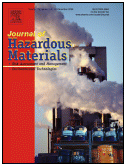
Saleh Group has published a recent paper in J Haz Mat. titled, "Barrier properties of poly(vinyl alcohol) membranes containing carbon nanotubes or activated carbon". 3rd year graduate student Iftheker A Khan, former undergrad researcher Atif A Chowdhury, and Dr. Saleh are co-authors in this paper with University of Minnesota’s Bill Arnold. This paper focuses on improvement of PVA membrane properties through incorporation of carbon nanotubes for removal of dissolved tri-chlorobenzene and copper.
Abstract
Carbon nanotube addition has been shown to improve the mechanical properties of some polymers. Because of their unique adsorptive properties, carbon nanotubes may also improve the barrier performance of polymers used in contaminant containment. This study compares the barrier performance of poly(vinyl alcohol) (PVA) membranes containing single-walled carbon nanotubes (SWCNTs) to that for PVA containing powdered activated carbon (PAC). Raw and surface-functionalized versions of each sorbent were tested for their abilities to adsorb 1,2,4-trichlorobenzene and Cu2+, representing the important hydrophobic organic and heavy metal contaminant classes, as they diffused across the PVA. In both cases, PAC (for 1,2,4-trichlorobenzene) and functionalized PAC (for Cu2+) outperformed SWCNTs on a per mass basis by trapping more of the contaminants within the barrier membrane. Kinetics of sorption are important in evaluating barrier properties, and poor performance of SWCNT-containing membranes as 1,2,4-TCB barriers is attributed to kinetic limitations.
Full Paper
December 2, 2010 Iftheker A Khan awarded Bert Storey Fellowship.

Iftheker A khan, a second year PhD student in the Saleh Group has been awarded the M. Bert Storey Endowed Graduate Fellowship, 2010-2011. This fellowship is awarded by Civil and Engineering Department of the College of Engineering and Computing in USC to the top Civil and Environmental graduate student. The fellowship is named after Mr. Bert Storey, a long time patron of the University. Iftheker will receive a $1,250 award that will support his research activities. Congratulations Iftheker!
October 29, 2010 Dr. Saleh has been selected as the nano-environmental thrust leader of USC Nanocenter.

USC Nanocenter has selected Dr. Saleh as the nano-environmental thrust leader. He is the only untenured Assistant Professor among seven other distinguished Professors in this elite pack of leaders of nanotechnology thrusts. Dr. Saleh's primary role will be to frame USC's nano-environmental research focus in the coming years under the guidance of the Nanocenter Director Tom Vogt.
October 06, 2010 News coverage of NSF education grant in USC Nanocenter website.

USC Nanocenter has profiled Saleh Group's recent grant on nanoeducation in the amount of $200,000, funded by the EEC directorate of the National Science Foundation. The project is titled "NUE: Nano in a Global Context for Engineering Students". Read more on this grant in the Nanocenter website.
October 01, 2010 Saleh Group has been awarded an NSF grant from the EEC directorate amounting $200,000. Dr. Saleh is the PI in the grant.

Saleh Group has received a grant on nanoeducation in the amount of $200,000, funded by the EEC directorate of the National Science Foundation. The project is titled "NUE: Nano in a Global Context for Engineering Students". Read more on this grant in the Civil and Environmental Engineering department website.
September 3, 2010 Dr. Saleh has been formally nominated as a key member of the Virginia Tech Center of Sustainable Nanotechnology (VTSuN).

Dr. Saleh has been selected as the only outside Virginia Tech faculty to take part in the multi-disciplinary sustainable nanotechnology effort of Virginia Tech Center of Sustainable Nanotechnology (VTSuN) center. The mission of VTSuN is to conduct and publicly disseminate research results concerning the development and evaluation of promising green nanomaterials, nanodevices, and nanotechnologies for their environmental sustainability and safety as well as the application of nanotechnology and nanoscience to environmental sustainability issues. Professor Saleh will be collaborating with the center to understand the environmental transport of nanomaterials in river systems, an area that has remained virtually unexplored. VTSuN's team i.e., Drs. Navid Saleh, Panos Diplas, Clint Dancey, and Michael Hochella, is preparing a number of proposals to be submitted to NSF, NIH, and other funding agencies.
August 26, 2010 Saleh Group presented 4 technical papers in the 240th ACS National Meeting held at Boston, MA.

In the most recent ACS National Meeting held at Boston, MA from August 22-26, 2010, three members from Saleh Group, ARM Nabiul Afrooz, Nirupam Aich, and Iftheker A. Khan, presented four papers in the area of environmental fate, transport, and effects of engineered nanomaterials. These papers were presented in the environmental chemistry division that included topics of aggregation behavior of chiral single-walled carbon nanotubes and hybrid nanomaterials (Khan et al. and Aich and Saleh), deposition behavior of anisotroic gold nanomaterials (Afrooz et al), and antimicrobial effect of anisotropic gold nanomaterials (Afrooz et al).
Proceeding Details:
Afrooz, A. R. M. N., Aich, N., Khan, I. A., Saleh, N. B. "Deposition Behavior of Anisotropic Nanomaterials", ACS National Meeting, Aug 22-26, 2010, Boston, MA.
Khan, I. A., Ferguson, P. L., Sabo-Attwood, T., Saleh, N. B. "Systematic Change in Chirality Affects Aggregation Kinetics of Single-Walled Carbon Nanotubes", ACS National Meeting, Aug 22-26, 2010, Boston, MA.
Aich, N., Saleh, N. B. "Aggregation Kinetics of Fullerene-Single-walled Carbon Nanotube Hybrids", ACS National Meeting, Aug 22-26, 2010, Boston, MA.
Afrooz, A. R. M. N., Zaib, Q., Decho, A. W., Saleh, N. B. "Role of Nanoparticle Geometry on Nano-bio Interaction: A Quest to Separate Physics from Chemistry", ACS National Meeting, Aug 22-26, 2010, Boston, MA.
August 26, 2010 Dr. Sabo-Attwood presented a technical paper in SETAC-Clemson meeting. Saleh group is a key contributor to the research.

Dr. Tara Sabo-Attwood of Environmental Health Science Department of Arnold School of Public Health at the University of South Carolina has presented a research paper on immunomodulatory response of engineered nanomaterials at the Nano 2010 conference. This international conference was jointly organized by SETAC and Clemson University that was held from August 22-26, 2010 at Clemson, SC. Saleh Group works in close collaboration with Dr. Sabo-Attwood to decipher the mechanistic interaction of engineered nanoparticles with eukaryotic cells.
Proceeding Details:
Sabo-Attwood, T., Brusch-Richardson, L., Ariza, M. E., Khan, I. A., Saleh, N. B., "Assessment of Immunomodulatory Potential of Engineered Nanoparticles" Environmental Effects of Nanoparticles and Nanomaterials, SETAC-Clemson University, Aug 22-26, 2010, Clemson, SC.
August 26, 2010 A journal article in Langmuir has been published where Dr. Saleh is a co-author.

A journal article entitled "Multiwalled Carbon Nanotube Filter: Improving Viral Removal at Low Pressure" has recently been published in Langmuir where Dr. Saleh is a co-author. This paper focuses on the possibilities of cost-effective efficient virus removal processes using multiwalled carbon nanotubes filters.
Abstract:
The effective removal of viruses by a multiwalled carbon nanotube (MWNT) filter is demonstrated over a range of solution chemistries. MS2 bacteriophage viral removal by the MWNT filter was between 1.5 and 3 log higher than that observed with a recently reported single-walled carbon nanotube (SWNT) filter when examined under similar loadings (0.3 mg/cm2) of carbon nanotubes (CNTs). The greater removal of viruses by the MWNT filter is attributed to a more uniform CNT-filter matrix that allows effective removal of viruses by physicochemical (depth) filtration. Viral removal by the MWNT filter was examined under a broad range of water compositions (ionic strength, monovalent and divalent salts, solution pH, natural organic matter, alginate, phosphate, and bicarbonate) and filter approach velocities (0.0016, 0.0044, and 0.0072 cm/s). Log viral removal increased as the fluid approach velocity decreased, exhibiting a dependence on approach velocity in agreement with colloid filtration theory for Brownian particles. Viral removal improved with increasing ionic strength (NaCl), from 5.06 log removal at 1 mM NaCl to greater than 6.56 log removal at 100 mM NaCl. Addition of calcium ions also enhanced viral removal, but the presence of magnesium ions resulted in a decrease in viral removal. Solution pH also played an important role in viral removal, with log removals of 8.13, 5.38, and 4.00 being documented at solution pH values of 3.0, 5.5, and 9.0, respectively. Dissolved natural organic matter (NOM) had a negligible effect on viral removal at low concentration (1 mg/L), but higher concentrations of NOM significantly reduced the viral removal by the MWNT filter, likely due to steric repulsion. Addition of alginate (model polysaccharide) also caused a marked decrease in viral removal by the MWNT filter. This highly scalable MWNT-filter technology at gravity-driven pressures presents new, cost-effective options for point-of-use filters for viral removal.
Full Paper
August 01, 2010 Dr. Saleh presented an invited lecture, jointly hosted by departments of Civil and Chemical Engineering, BUET, Dhaka, Bangladesh.

Dr. Saleh presented a technical lecture titled "Applications and Implications of Nanotechnology". The seminar, held ITN Centre at Civil Bldg (BUET), was open for the faculties and students. In his speech Dr. Saleh addressed how the nanotechnology and nanomaterials can be applied to solve environmental and health problems. The seminar was followed by a lively discussion session with audience. Read More
July 16, 2010 Dr. Saleh presented a technical paper in the Clemson Carbon conference.

As a lead researcher in the study of the environmental impact of the carbon based nanomaterials Dr. Saleh was invited to present in the international conference on carbon nano- and macro-scale materials held at Clemson University, Clemson, SC from July 11-16, 2010. Dr. Saleh presented experimental and theoretical insight into the fundamental aggregation and deposition behavior of carbon nanotubes in aquatic environment.
Proceeding Details:
Saleh, N. "Aggregation and Deposition Behavior of Carbon Nanotubes in Aquatic Environments" Clemson Carbon Conference, July 11-16, 2010, Clemson, SC.
July 9, 2010 Dr. Saleh nominated for Marquis Who's Who in Science and Engineering.

Marquis Who's Who has nominated Dr. Saleh for Who's Who in Science and Engineering 2011-2012. Marquis Who's Who is the premiere biographer for American leaders in academia and industry since 1899. This honor is awarded to listees with significant contribution to their respective fields.
July 1, 2010 Saleh Group has been awarded a grant by the USC Nanocenter amounting $20,000.

Saleh Group has been awarded a grant by USC Nanocenter to establish the first of its kind study of environmental fate and transport of hybrid nanomaterials. The project will be accomplished in joint collaboration with Dr. Harry Dorn in Virginia Tech. Read more on the project in our research page.
May 1, 2010 Saleh Group is awarded a grant by GSE&C amounting $220,000. Dr. Saleh is a Co-PI in the grant.

Saleh Group has been awarded a grant by Goldstar E&C, Korea, to study effect of carbon nanotubes in removing endocrine disrupting compounds from wastewater. Dr. Saleh, a Co-PI in the project, is a key contributor to the nanomaterial characterization, functionalization, and use. The project will be accomplished in joint collaboration with Drs. Yeomin Yoon (PI) and Joseph Flora (Co-PI) in USC. Read more on the project in our research page.
March 11, 2010 Leslyn Brusch-Richardson has presented a paper in the 49th Annual Meeting of Society of Toxicology, held at Salt lake City, UT. Saleh group is a key contributor in the study.

Leslyn Brusch-Richardson, a co-advised student of Drs. Navid Saleh and Tara Sabo-Attwood has presented a research paper on immunomodulatory response of engineered nanomaterials at the Society of Toxicology (SOT) Annual meeting held at Salt Lake City, UT from March 07-11, 2010. Saleh Group works in close collaboration with Dr. Sabo-Attwood to decipher the mechanistic interaction of engineered nanoparticles with eukaryotic cells.
Proceeding Details:
Brusch-Richardson, L., Ariza, M. E., Saleh, N. B., Sabo-Attwood, T. "Development of a High Throughput Assay to Assess the Immunomodulatory Potential of Engineered Nanoparticles" Society of Toxicology 49th Annual Meeting, March 07-11, 2010, Salt lake City, UT.
February 25, 2010 Saleh Group has published a paper in Environ. Sci. Technol. Dr. Saleh is the lead author in the paper.

A journal article titled "Influence of Biomacromolecules and Humic Acid on Aggregation Kinetics of Single-Walled Carbon Nanotubes" has recently been published in Environmental Science & Technology that studies aggregation behavior of single-walled carbon nanotubes (SWNTs) in natural organic matter and biomacromolecules of biological and environmental relevance. The study chose humic acid, bovine serum albumin (BSA), Luria broth (LB), and alginate as the natural and biological macromolecules to study the aggregation kinetics of SWNTs.
Abstract
The initial aggregation kinetics of single-walled carbon nanotubes (SWNTs) were studied using time-resolved dynamic light scattering. Aggregation of SWNTs was evaluated in the presence of natural organic matter [Suwannee River humic acid (SRHA)], polysaccharide (alginate), protein [bovine serum albumin (BSA)], and cell culture medium [Luria-Bertani (LB) broth] with varying solution concentrations of monovalent (NaCl) and divalent (CaCl2) salts. Increasing salt concentration and adding divalent calcium ions induced SWNT aggregation by screening electrostatic charge and thereby suppressing electrostatic repulsion, similar to observations with aquatic colloidal particles. The presence of biomacromolecules significantly retarded the SWNT aggregation rate. BSA protein molecules were most effective in reducing the rate of aggregation followed by SRHA, LB, and alginate. The slowing of the SWNT aggregation rate in the presence of the biomacromolecules and SRHA can be attributed to steric repulsion originating from the adsorbed macromolecular layer. The remarkably enhanced SWNT stability in the presence of BSA, compared to that with the other biomacromolecules and SRHA, is ascribed to the BSA globular molecular structure that enhances steric repulsion. The results have direct implications for the fate and behavior of SWNTs in aquatic environments and biological media.
Full Paper
October 1, 2009 Saleh Group has been awarded an NSF grant from the CBET directorate amounting $400,000. Dr. Saleh is the PI in the grant.

Saleh Group has received a grant in the amount of $400,000, funded by the CBET directorate of the National Science Foundation. The project is titled "Influence of diameter and chirality of single-walled carbon nanotubes on their fate and effects in the aquatic environment". Read more on this grant in our research page.
April 8, 2009 A journal article in Environ Sci and Technol has been published where Dr. Saleh is a co-author.

A journal article titled "Effect of Adsorbed Polyelectrolytes on Nanoscale Zero Valent Iron Particle Attachment to Soil Surface Models" has recently been published in Environmental Science & Technology which discusses the effect of coatings on the interaction of nanoscale zerovalent iron (NZVI) and soil surface. Dr. Saleh is a co-author in this paper.
Abstract
Polyelectrolyte coatings significantly increase the mobility of nanoscale zerovalent iron (NZVI) in saturated porous media. The effect can be attributed to improved colloidal stability of NZVI suspensions, decreased adhesion to soil surfaces, or a combination of the two effects. This research explicitly examines how coatings control NZVI adhesion to model soil surfaces. NZVI was coated with three different polyelectrolyte block copolymers based on poly(methacrylic acid), poly(methyl methacrylate or butyl methacrylate), and poly(styrenesulfonate) or with a poly(styrenesulfonate) homopolymer. SiO2 and a humic acid film served as model soil surfaces. The polyelectrolytes increased the magnitude of the electrophoretic mobility of NZVI over a broad pH range relative to unmodified NZVI and shifted the isoelectric point outside the typical groundwater pH range. Quartz crystal microgravimetry measurements indicated extensive adhesion of unmodified NZVI to SiO2. Polyelectrolyte coatings decreased adhesion by approximately 3 orders of magnitude. Adding 50 mM NaCl to screen electrostatic repulsions did not significantly increase adhesion of modified NZVI. Coated NZVI did not adhere to humic acid films for either 1 mM NaHCO3 or 1 mM NaHCO3 + 50 mM NaCl. The lack of adhesion even in a high ionic strength medium was attributed to electrosteric repulsion, as opposed to electrostatic double layer repulsion, between the polyelectrolyte-coated NZVI and the negatively charged surfaces. The lack of significant adhesion on either model surface was observed for all polymer architectures investigated.
Full Paper